


 Fotografia: Mariano Silva
Fotografia: Mariano Silva

Sinto-me extremamente realizada com o meu trabalho, porque comecei quase como uma brincadeira e actualmente é a minha profissão.
– Maira Santos, humorista





 Fotografia: Mariano Silva
Fotografia: Mariano Silva

Sinto-me extremamente realizada com o meu trabalho, porque comecei quase como uma brincadeira e actualmente é a minha profissão.
– Maira Santos, humorista

“Comecei a fazer comédia stand-up em 2017, em Nampula. No princípio, era principalmente por diversão e porque achava que podia ganhar dinheiro divertindo-me. Sempre gostei de criar coisas novas. Na épo ca, não conheciam esta arte em Nampula. Reuni amigos e criei um grupo intitulado “Juntos e Misturados”, e começámos a fazer apresentações. Posteriormente, mudei-me para Maputo e comecei a fazer apre sentações com o Rico Biosse. Sinto-me extremamente realizada com o meu trabalho, porque comecei quase como uma brincadeira, e actualmente é a minha profissão. Rir liberta a alma.
As ideias para a comédia e para meu trabalho surgem do quotidiano, das coisas que vivo e observo. Na realida de, o que faz o público rir de alguma piada ou história é uma situação em que ele se identifica. A piada é o resultado da soma de uma verdade e um pouco de dor.
Quando decidi enveredar pelo mundo da co média, assisti a um vídeo do Afonso Padilha que me inspirou bastante, e sonhava poder conhe cê-lo pessoalmente e agradecer-lhe pelo tra balho incrível que ele faz. Em Março deste ano surgiu a oportunidade de ir ao Brasil, onde, para além de o conhecer, fiz a aber tura de um dos seus shows e, no fim do show, pude tecer algumas palavras, agradecendo-lhe direc tamente em palco. Nunca ima ginei que pudesse concretizar este sonho. A nível internacional, tenho como referências o Afon so Padilha e o Rodrigo Marques, ambos humoristas brasileiros. No que toca a referências de Moçambique, gosto imenso do Gilberto Mendes como humo rista no geral.
A pandemia me trouxe um desafio. Com tudo fechado e sem podermos fazer shows,
surgiu a oportunidade de levar a comédia dos palcos para a televisão. Fui a primeira mulher no nosso país a fazer um programa de comédia stand-up. Descobri então essa inclinação como apresentadora de televisão. Hoje considero que as técnicas que aprendi na televisão ajudam bastante os outros projectos que vou criando.

A globalização está a caminhar para o digital. Nos tempos que correm, através de uma plata forma digital podemos acompanhar um show de comédia de um humorista que vive em qual quer canto do mundo. Com apenas um click, a divulgação de um trabalho pode ser feita em tempo recorde, com uma exposição tridimen sional.
Os maiores desafios que enfrentamos actual mente são a valorização do artista como artista, a integração do mesmo como um mecanismo eficaz de relações e acordos entre países e a protecção de todos os fazedores de arte. A arte tem um impacto surreal, a arte caracteriza, des taca e agrega um enorme valor para o país, e conecta pessoas, independentemente da raça, etnia ou orientação sexual.
Alguns dos meus projectos para o futuro já es tão em andamento. Comecei recentemente um podcast intitulado FalaCastMoz e o The Come dy Club, que é a primeira casa de comédia em Moçambique.
Silva
para o
e
pessoas,
da
ou
 Fotografia: Mariano Silva
Fotografia: Mariano Silva
“I started doing stand-up comedy in 2017, in Nampula. At first, it was mostly for fun and because I thought I could make money by having fun. I always liked to create new things. At the time, they didn’t know this art from in Nampula. I gathered some friends and created a group called “Juntos e Misturados” (“Together and Mixed”), and we started doing shows. Later, I moved to Maputo and started doing shows with Rico Bi osse. I feel extremely fulfilled in my work, because it started almost as a joke, and now it's my profession. Laughter frees the soul.
The ideas for the comedy [skits] and for my work come from everyday life, from the things I live through and observe. In reality, what makes the audience laugh at a joke or story is a situation they identify with. A joke results from the sum of a truth plus a little pain.
When I decided to enter the world of comedy, I watched a video by Afonso Padilha that inspired me a lot, and I dreamt of being able to meet him in person and thank him for the incredible work he does. In March this year, the opportunity arose to go to Brazil where, in addition to meeting him, I opened for one of his shows and, at the end of the show, I was able to say a few words, thanking him directly on stage. I never imagined that I could make this dream come true. Internationally, I have Afonso Padilha and Rodrigo Marques as references, both Brazilian comedians. When it comes to refer ences in Mozambique, I really like Gilberto Mendes as a humorist in general.
The pandemic brought me a challenge. With everything closed and without being able to do shows, the opportunity arose to take comedy from the stage to television. I was the first woman in our

country to do a stand-up comedy show. I discov ered then that I have an inclination towards pre senting on television. Today, I consider that the techniques I learnt on television help a lot of the other projects I have since created.
Globalization is moving towards digital. Nowadays, we can follow a comedy show by a comedian who lives in any corner of the world by virtue of it be ing on a digital platform. With just one click, the dissemination of work can be done in record time, with a three-dimensional exposure.
The biggest challenges we currently face are the appreciation of the artist as an artist, and integrat ing that into an effective mechanism of relations and agreements between countries and the pro tection of all art makers. Art has a surreal impact, art characterizes, highlights and adds enormous value to the country, and connects people regardless of race, ethnicity or sexual orientation.
Some of my projects for the future are already un derway. I recently started a podcast entitled FalaC astMoz and The Comedy Club, which is the first comedy house in Mozambique.
 Fotografia: Mariano Silva
Fotografia: Mariano Silva



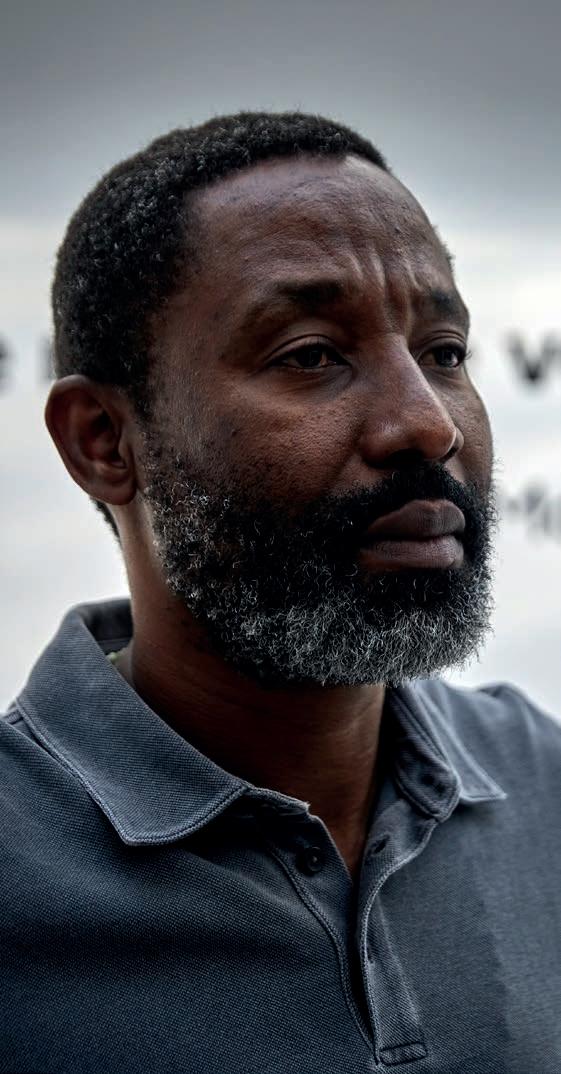

Moda Baía
Maida, a primeira telenovela nacional Maida, the first national telenovela
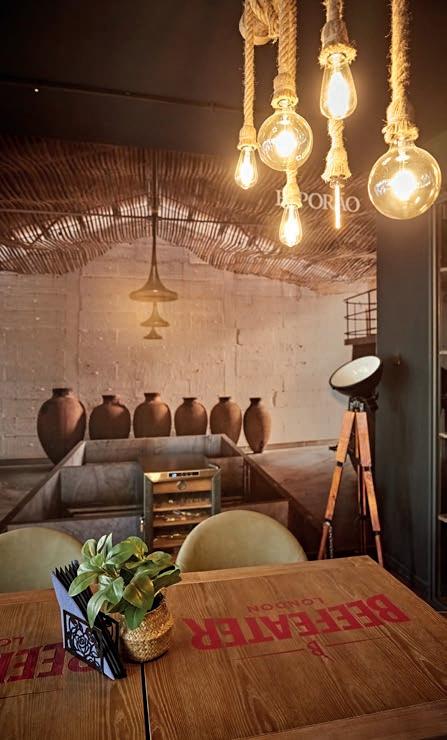

Estamos novamente em Setembro e o ano co meça a aproximar-se da sua recta final. Gradual mente, os dias estão a ficar mais longos, e os sor risos e energias positivas tão característicos da época parecem estar de regresso. A pandemia recuou, embora isso não nos deva fazer baixar a guarda. Ela causou profundos danos, de alguns dos quais muitos ainda se ressentem, mas o sen timento de esperança ajuda-nos a reunir forças para prosseguir, e pode fazer-nos de novo sonhar. O já podermos conviver com familiares e amigos, frequentar livremente as nossas praias, assistir a espectáculos e outros eventos culturais traz con sigo uma boa sensação de liberdade que nos en che a alma. Para o acompanhar nesta onda, aqui tem mais uma vez a Xonguila a trazer-lhe alguma informação pretendendo oferecer-lhe momen tos de conhecimento e deleite.

O número meia centena mais um apresenta-lhe um artigo sobre a inauguração do Centro Cultural Bons Sinais, resultado da reabilitação e refuncio nalização da chamada Igreja Velha de Quelimane, edifício que, salvo de total degradação, promete ser um ponto de referência cultural e histórica na cidade para usufruto de todos os seus habitan tes e visitantes. Também damos conta de uma interessante conversa com a activa humorista e apresentadora de televisão Maira Santos, bem como da exposição “Blackmoney” do prestigia do fotógrafo Mauro Pinto. Sabia que a gigante mundial de tecnologia Microsoft, expandiu para Moçambique o seu programa de recrutamento de talentos africanos? Não? A Xonguila conta-lhe tudo. Fique connosco, pois estas e muitas outras matérias estão a um simples virar de página.
Os meus cumprimentos, sempre almejando que leia o nosso magazine com a maior satisfação. Muito obrigado pela preferência e votos de uma prazerosa leitura.
Dear esteemed reader,
It's September again and the year is approach ing its final stretch. Gradually, the days are get ting longer, and the smiles and positive ener gies so characteristic of the season seem to be returning again. The pandemic has abated, although that should not make us let our guard down. It caused profound damage, some of which is still felt by many, but the feeling of hope helps us gather the strength to continue and can make us dream again. Being able to live with family and friends, freely visit our beaches again, attend shows and other cultural events brings with it a good feeling of freedom that fills our soul. To accompany you on this positive wave, here is Xonguila once again bringing you some information, intended to offer you mo ments of insight and delight in equal measure.
Issue fifty-one presents you with an article about the inauguration of the Bons Sinais Cul tural Centre, the result of the rehabilitation and reuse of the so-called Old Church of Queli mane, a building that, saved from total degra dation, promises to be a cultural and historical hallmark in the city for the enjoyment of all its inhabitants and visitors. We also feature an in teresting conversation with the very active co median and television presenter Maira Santos, as well as the exhibition “Blackmoney” by the prestigious photographer Mauro Pinto. Did you know that the global technology giant Micro soft has expanded its African talent recruitment program to Mozambique? You didn’t? Xonguila tells you everything. Stay with us, because these and many other articles are just a page turn away.
My regards to you and wishing, as always, that you read our magazine with the greatest satisfaction. Thank you very much for your preference, and best wishes for a pleasant reading.
 Nuno Soares Director
Nuno Soares Director
Com o apoio de:
Vamos impulsionar o seu negócio com as soluções para a Banca de Negócios do Absa.
Seja o que for que o inspirou a iniciar o seu negócio, oferecemos uma variedade de serviços bancários para ajudá-lo a levar o seu negócio para o próximo nível.
Celebramos o seu negócio. Agora vamos impulsioná-lo. Dirija-se já ao balcão do Absa mais próximo.
Isso é Africanicidade. Isso é Absa
Bank Moçambique, SA (registado sob o número 101220982) é regulado pelo Banco de Moçambique.

De edifício abandonado e apontando para ruína, a chamada Igreja Velha de Quelimane é agora um centro cultural e turístico que pretende ser de referência em Moçambique


Finalmente, depois de algumas tentativas que por razões várias não foram avante, realizou-se o sonho de inúmeros quelimanenses, outros zambezianos e moçambicanos, de imensos na turais e amigos de Moçambique espalhados pelo mundo: foi reabilitado o edifício da antiga Igreja de Nossa Senhora do Livramento de Quelimane, o mais valioso património histórico edi ficado da província da Zambézia. De edifício abandonado e com sinais apontando para total ruína, é agora um centro cultural e turístico que pretende ser de referência em Moçambique: o Centro Cultural Bons Sinais.
Situada em zona no bre junto ao Rio dos Bons Sinais, e conhe cida por Igreja Velha de Quelimane, a antiga Igreja de Nossa Senhora do Livra mento foi construída no pe ríodo 1776-1786. Representa uma das poucas expressões arquitectónicas setecentistas em Moçambique e é um dos mais importantes testemu nhos da presença portuguesa no vale do Zambeze, pelo que foi proclamada monumento

nacional em 1943. Inicialmen te igreja paroquial, tornou-se Sé Catedral com a criação da Diocese de Quelimane em 1954. Em 1974, com a constru ção da nova Catedral, igual mente denominada Igreja de Nossa Senhora do Livramento, perdeu esse estatuto, acaban do por ser votada ao abando no e vandalizada, estado em que permaneceu durante dé cadas.

A história recente desse im
ponente edifício teve início quando um pequeno grupo de amigos com forte ligação a Quelimane, vendo o risco de se perder tão importan te património, e ciente de pertencer a uma das últimas gerações que o poderia sal var, decidiu lançar um amplo movimento para juntar a si os naturais, residentes e ex-re sidentes da cidade, amigos e simpatizantes da província da Zambézia, bem como todos os demais que fossem sensí

veis ao problema e quisessem de alguma forma contribuir para a sua resolução. Longe de um movimento saudosis ta ou regionalista, por muito que Quelimane e a Zambézia tivessem marcado a infância e juventude dos componen tes desse pequeno grupo de amigos, tratava-se da mani festação de uma forte von tade de preservar a história e riqueza patrimonial do local, ajudando simultaneamente as entidades a melhorar a ci dade e a vida dos que lá re sidem.
Foi desse movimento que nasceu a Associação dos Bons Sinais (ABS), entidade de in teresse social e cultural sem fins lucrativos publicamente anunciada cinco anos atrás, nas comemorações do 75º aniversário da elevação de Quelimane a cidade. Na mul tidão que o testemunhou, encontravam-se já presentes dezenas de simpatizantes da causa, alguns dos quais an tigos residentes da cidade vindos de diversos cantos do mundo para assistir ao acto e às festividades. Em nome des tes, e de imediato sinalizando o seu desejo de apoiar a cida de e a província, a Associação ofereceu, num convívio reali zado no dia seguinte na praia do Zalala, bolsas de estudo para 75 crianças frequentarem o ensino primário, livros para bibliotecas da cidade, me


dicamentos e kits cirúrgicos para os hospitais de Quelima ne e Gurúe, bem como mate rial desportivo para a equipa 1º de Maio, a única da província que se encontrava a participar no campeonato nacional de futebol. Destacou-se na oca sião a presença de Francisco Próspero dos Santos, enge nheiro de 97 anos de idade que, ao fim de noventa anos de ausência, quis visitar a sua terra natal.
Seguiu-se uma ampla cam panha de angariação de fun dos, com apelos e cartas a particulares, instituições esta tais e empresas moçambica nas, embaixadas e outras en tidades internacionais, bem como acções diversas pro movidas por membros e sim patizantes da ABS. Vendo no projecto um exemplo singular de acção da sociedade civil conjuntamente desencadea da por pessoas de diversas crenças religiosas e filiações partidárias, as Embaixadas do Reino da Noruega e dos Estados Unidos da América responderam muito positiva mente aos apelos, acabando por conceder, em tranches, um total de aproximada mente quinhentos mil dóla res para o projecto. Entre os membros e simpatizantes da ABS, significativos foram tam bém os contributos financei ros, provenientes de acções
diversas, tais como a doação individual e de algumas ins tituições de valores monetá rios, e a realização de jantares, um leilão de peças artísticas doadas pelos autores - Ge muce, Dino Jethá e Vista Ale gre -, um espectáculo em Portugal com a participação pro bono de diversos artistas moçambicanos e portugue ses, entre os quais os sobeja mente conhecidos Rão Kyao, Maria João e António Pinto Basto, uma rifa patrocinada por Shéu Han, antiga estrela do futebol português natural de Moçambique, a coloca ção de mealheiros em alguns pontos da cidade, a venda de T-shirts e outros artigos com o logotipo da Associação, e, fi nalmente, uma campanha in titulada “Coloque um mosaico no chão da antiga Catedral de Quelimane“. Diversas foram também as doações em gé nero recebidas de membros e simpatizantes, tais como o trabalho especializado vo luntário de engenheiros, ar
quitectos e outros, sacos de cimento, disponibilidade para troca de telhas marselhesas (iguais às originais do edifício) por chapas de zinco, a porta principal do edifício, trans porte de alguns materiais por longa distância, publicações dedicadas a Quelimane e ao projecto, entre outras.

Passados que são 5 anos so bre o referido lançamento, os esforços realizados pela Associação dos Bons Sinais, que logo de início assinou um Contrato-Programa com a Diocese de Quelimane, pro prietária do edifício, permi tiram abrir, no passado 21 de Agosto, dia em que a cidade celebrou 80 anos de existên cia, o Centro Cultural Bons Si nais. O que se pretende é que ele seja um centro cultural e turístico de referência na cida de, podendo ser frequentado por todos os que nela residem ou a visitem. Não será mais um local de culto específico, mas um sítio para usufruto de


todos,independentemente da sua filiação religiosa, que terá como missão promover a cultura, preservar e divulgar a história da cidade e da região e fomentar os valores funda mentais de paz e harmonia entre todos.
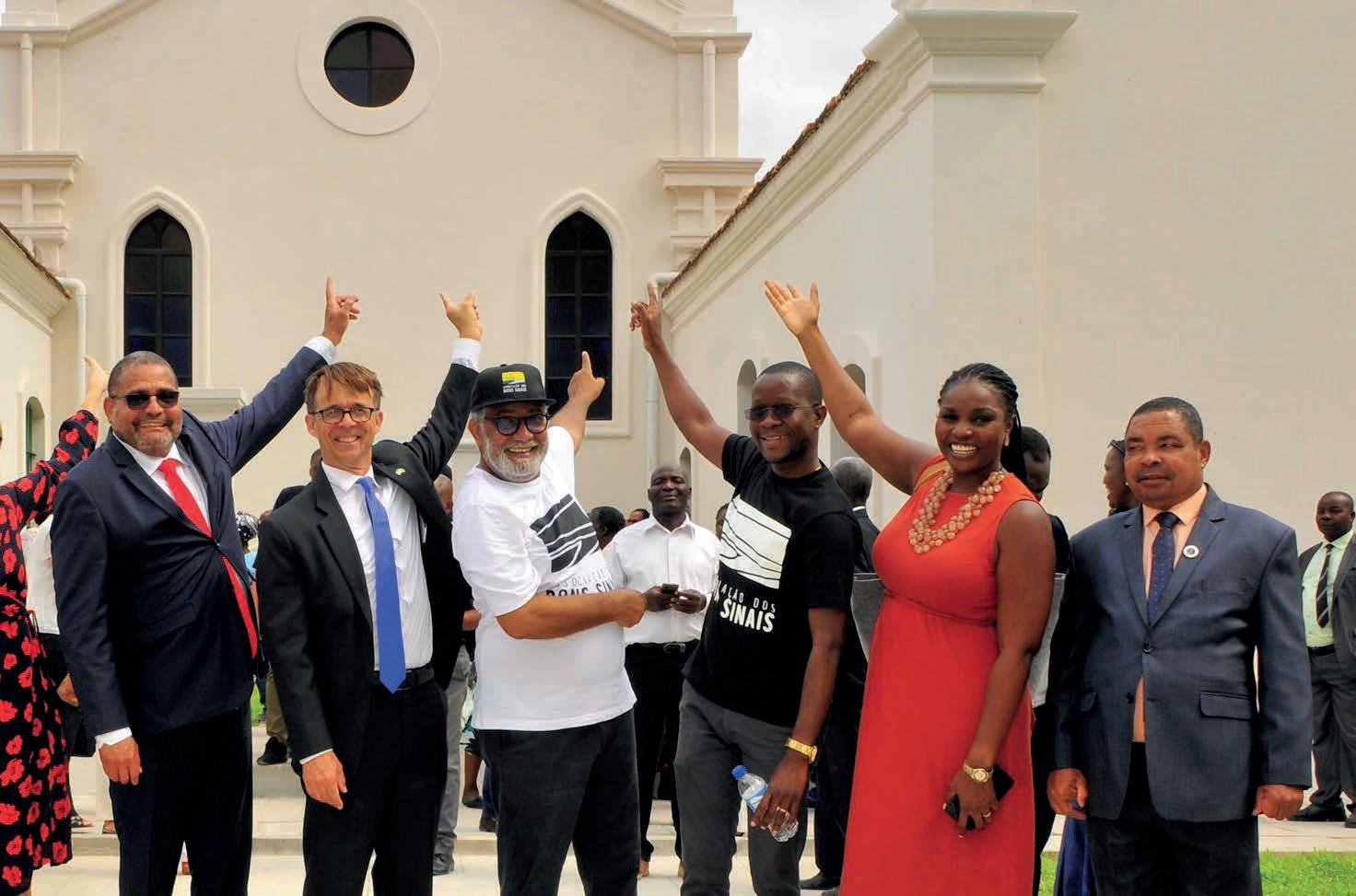
Muito fica por fazer. Os de safios imediatos prendem-se não só com a gestão, manu tenção e segurança do pa trimónio, mas também com a sua utilização devida, para o que a Associação dos Bons Sinais espera a colaboração dos habitantes da cidade e de todos os particulares e enti dades colectivas que se inte ressem pela consecução dos mesmos ideais.
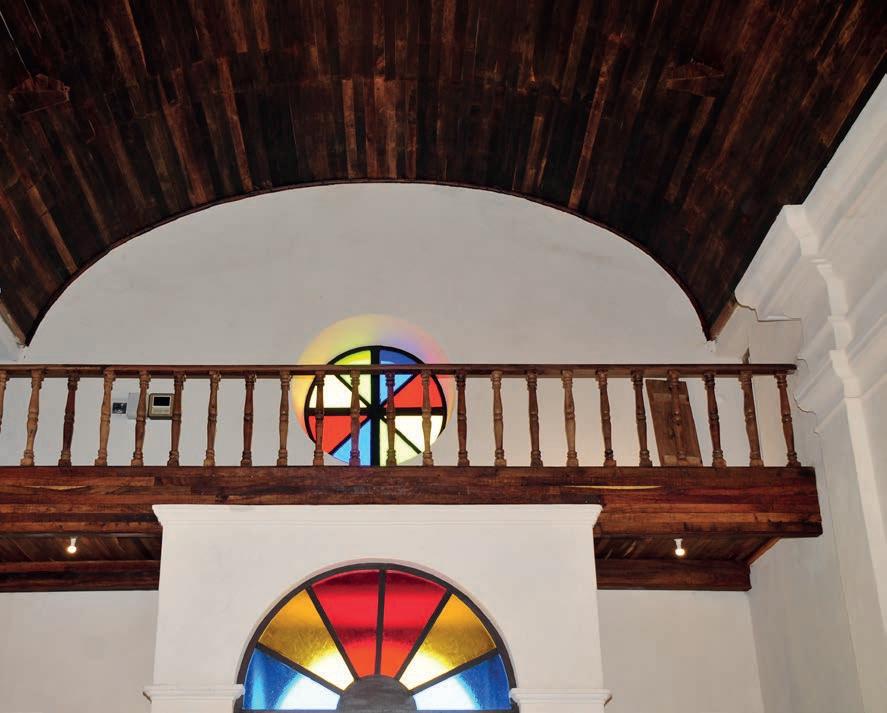


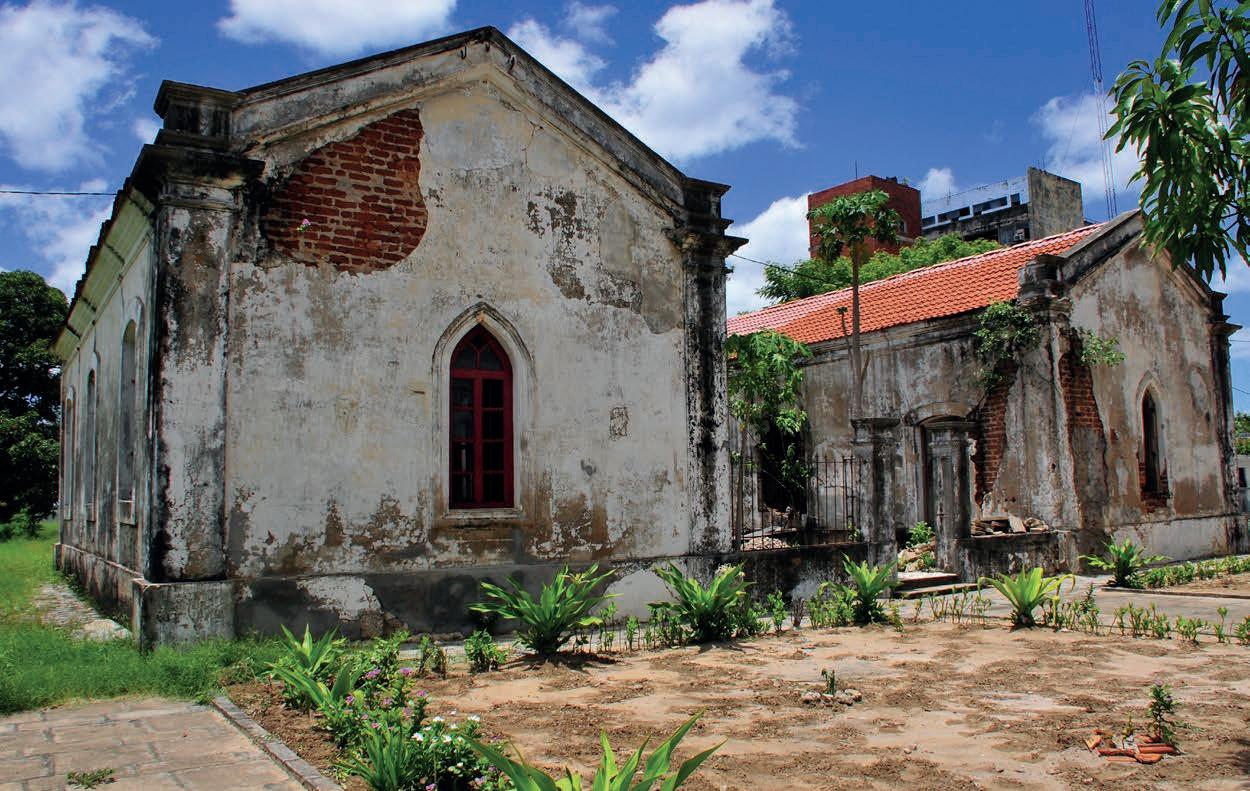

At long last, after a few unsuccessful attempts due to various reasons, a dream came true for count less people from Quelimane, Zambézia and other regions, for many other Mozambican-born and friends of Mozambique scattered around the world: the restoration of the old Church of Nossa Sen hora do Livramento de Quelimane, the most valuable heritage building site in the province of Zam bézia. From an abandoned building with signs pointing to total ruin, to a now cultural and tourist center that aims to be a reference in Mozambique: the Bons Sinais Cultural Centre.
Located in a prime area by the Bons Sinais River, and also known as the Old Church of Quelimane, the old Church of Nossa Sen hora do Livramento (“Our Lady of Deliverance”) was built in the period 1776-1786. It constitutes one of the few architectural ex pressions of the 18th century in Mozambique and is one of the most important testaments of the Portuguese presence in the Zambezi valley. For this reason, it

was proclaimed a national mon ument in 1943. Initially a parish church, it became the Cathedral with the creation of the Diocese of Quelimane in 1954. In 1974, with the construction of the new Cathedral, also named Church of Nossa Senhora do Livramen to, the building lost that status, ending up abandoned and van dalized, a state in which it would remain for decades.

The recent history of this impos
ing building began when a small group of friends with a strong connection to Quelimane came together to face the prospect of losing such an important piece of heritage, aware that they be longed to one of the last genera tions that could save it. They de cided to launch a broad-based movement to bring together the Quelimane-born, residents and former residents of the city, friends and supporters of the province of Zambézia, as well as
any others who were sensitive to the problem and wanted to somehow contribute to its resolu tion. Far from being a nostalgic or regionalist movement – no mat ter how much Quelimane and Zambézia had marked the child hood and youth of the members of this small group of friends – it was primarily the manifestation of a strong desire to preserve the history and patrimonial wealth of the place, while helping entities to improve the city and the lives of those who live there.
It was from this movement that the Associação dos Bons Sinais (ABS – “Association of the Bons Sinais”) was born, a non-profit social and cultural entity that was publicly announced five years ago during the celebrations of the 75th anniversary of the eleva tion of Quelimane to the status of city. Among the crowd attending the announcement, there were already dozens of supporters of the cause, some of whom were former residents of the city who came from different corners of the world to attend the act and the festivities. On their behalf, and immediately signaling its de sire to support the city and the province, the Association offered, in a meeting held the following day at Zalala beach, scholarships for 75 children to attend primary school, books for the city's librar ies , medicines and surgical kits for the hospitals of Quelimane and Gurúe, as well as sports equipment for the 1º de Maio (“May Day”) team, the only one in the province to participate in the national football championship. The presence of Francisco Prós pero dos Santos, a 97-year-old engineer who, after ninety years of absence, wanted to visit his homeland, stood out on the oc casion.
An extensive fundraising cam paign ensued, with appeals and letters to individuals, state insti tutions and Mozambican com panies, embassies and other
international entities, as well as various actions promoted by ABS members and supporters. The Embassies of the Kingdom of Norway and the United States of America responded very pos itively to the appeals, seeing the project as a unique example of civil society action jointly un dertaken by people of different religious beliefs and party affilia tions, and thus ended up grant ing a combined total of approx imately five hundred thousand dollars for the project. Among ABS members and supporters, financial contributions were also significant, coming from various actions such as cash donations from individuals and institutions, hosting dinners, an auction of art donated by the authors –Gemuce, Dino Jethá and Vista Alegre –, a show in Portugal with the pro bono participation of sev eral Mozambican and Portuguese artists, including the well-known Rão Kyao, Maria João and António Pinto Basto, a raffle sponsored by Shéu Han, a former Portuguese football star born in Mozambique, the placement of piggy banks in some parts of the city, the sale of T-shirts and other items with the
association's logo and, finally, a campaign entitled “Coloque um mosaico no chão da antiga Cat edral de Quelimane“ (“Place a tile on the floor of the old Cathedral of Quelimane“). There were also several donations in kind received from members and supporters, such as the volunteer specialist work of engineers, architects and others, bags of cement, willing ness to exchange Marselha tiles (the same roof tile type as the original ones on the building) for zinc sheets, the main entrance door to the building, transporta tion of some materials over long distances, publications dedicat ed to Quelimane and the project, among others.
Five years after the launch, the efforts made by the Associação dos Bons Sinais, which had signed a Program-Contract at the outset with the building´s owner, the Diocese of Queli mane, allowed for the opening of the Centro Cultural Bons Sinais (“Bons Sinais Cultural Centre”) on August 21st, the day the city cele brated 80 years of existence. The aim is for it to be a cultural and tourist centre of reference in the city, which can be visited by all those who live there or visit. It will no longer be a place of worship for a specific religion, but rather a place for everyone to enjoy, regardless of their religious affil iation. The Centre´s mission will be to promote culture, preserve and disseminate the history of the city and the region and foster the fundamental values of peace and harmony among everyone.
Much remains to be done. The immediate challenges relate not only to the management, maintenance and security of the heritage site, but also to its proper use, for which the Asso ciação dos Bons Sinais expects the collaboration of the inhab itants of the city and of all in dividuals and collective entities that are interested in pursuing the same ideals.
The aim is for it to be a cultural and tourist centre of reference in the city, which can be visited by all those who live there or visit
 As fotos para este artigo foram gentilmente cedidas por Darsh Chetan Rasciclal (Foto Quelimane) e Edson Barros
As fotos para este artigo foram gentilmente cedidas por Darsh Chetan Rasciclal (Foto Quelimane) e Edson Barros


OMillennium bim e o Camões – Centro Cultural Português apresentaram ao público a exposição “A Dança das Sombras”, do artista plás tico conhecido por Butcheca,
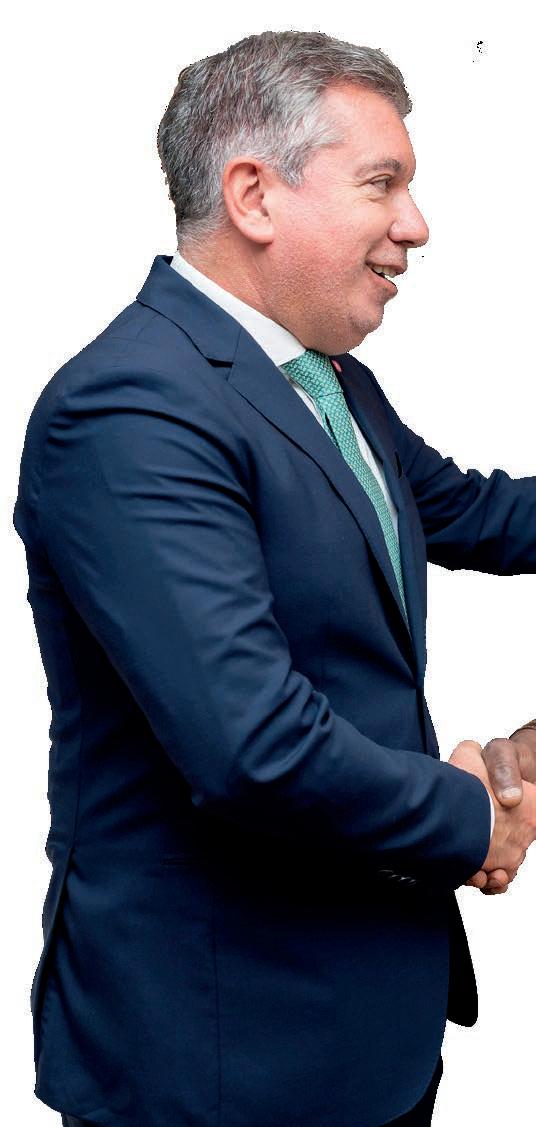
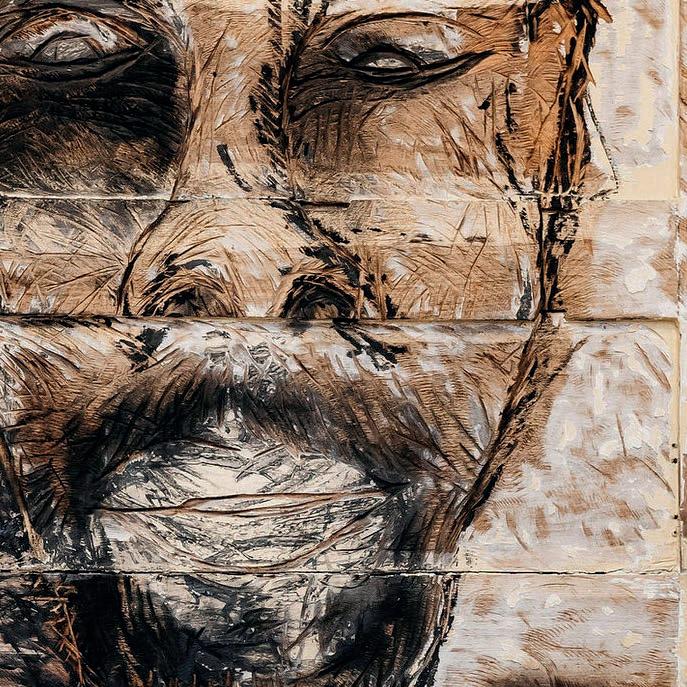
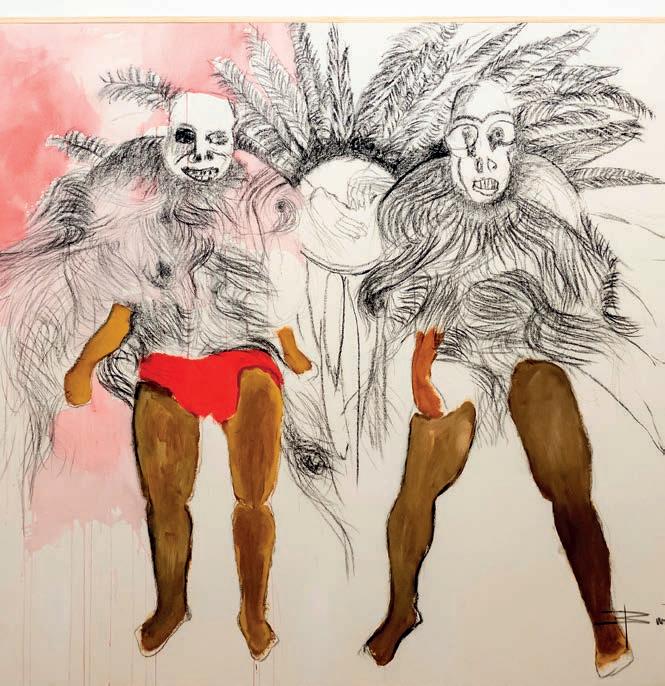
um dos nomes sonantes no cenário da arte contemporâ nea em Moçambique.
O apoio à cultura é uma das áreas de intervenção do Millennium bim, através do
seu programa de responsa bilidade social “Mais Moçam bique pra Mim”. Neste con texto, o Banco tem apoiado inúmeras iniciativas artísticas que decorrem de norte a sul do país, contribuindo para a
Fotografia: Cortesia de Millennium bimdivulgação e protecção do legado histórico-cultural de Moçambique.
“A Dança das Sombras” é uma surpreendente apresentação individual pública de Butche ca de um conjunto de obras recentes. No projecto, conce bido para o espaço do “Ca mões”, o artista dá a conhecer obras inspiradas no movimen to, na dança, nos rituais, nas máscaras, identidades e cul turas que pautam pela diversi dade e, simultaneamente, por uma linha comum e única.
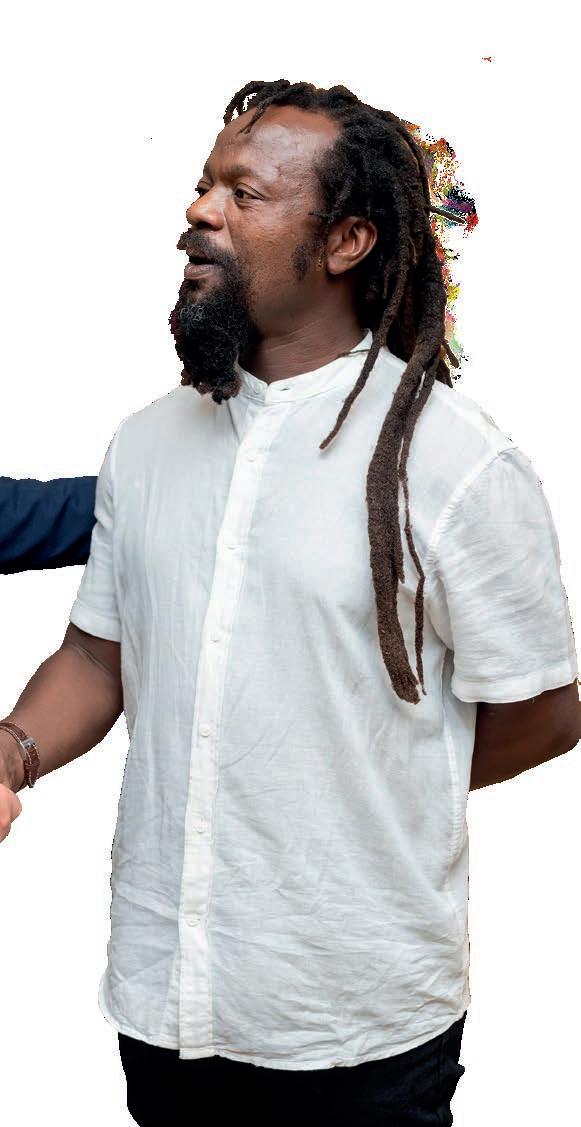
"A promoção das artes nacio nais e o apoio ao desenvol
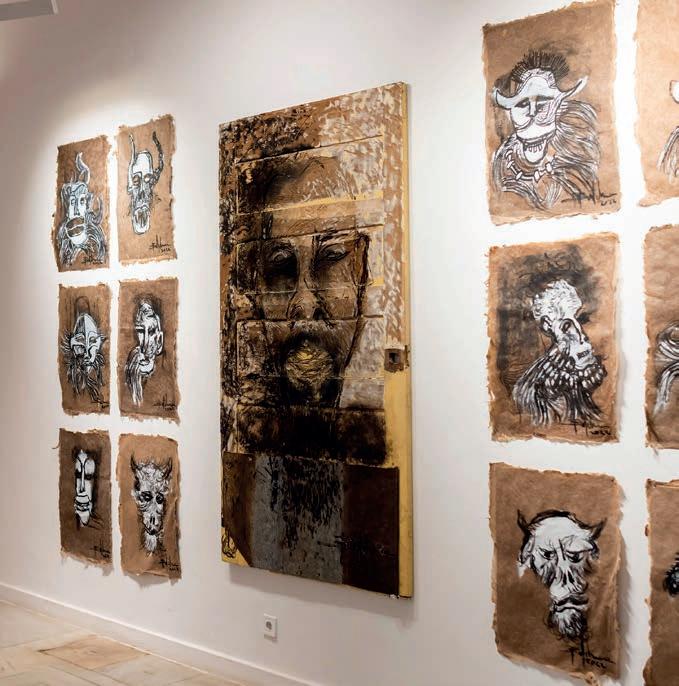
vimento da cultura moçam bicana é um dos pilares de actuação do programa de responsabilidade social do Millennium bim. Neste sen tido, é com satisfação que apoiamos a exposição de Bu tcheca, que procura enaltecer os valores da nossa socieda de, representada em obras que comportam todo o vigor técnico e criativo do artista, sem descurar a exaltação fei ta às expressões, sentimentos e sensações" – declarou José Reino da Costa, Presidente da Comissão Executiva do Millennium bim.
O projecto “A Dança das Som
bras” integra a 3ª edição do Festival Gala-Gala, iniciativa que junta, na mesma semana (12 a 18 de Setembro), a pro gramação de vários espaços culturais na cidade de Mapu to. Com o apoio à exposição, o Millennium bim reforça o seu compromisso de contri buir activamente para a pro moção da cultura moçambi cana privilegiando diversas iniciativas de divulgação do património e interdisciplinari dade artística, assim como o apoio a diversos projectos de âmbito cultural de entidades que se constituem como re ferência no panorama cultu ral nacional.
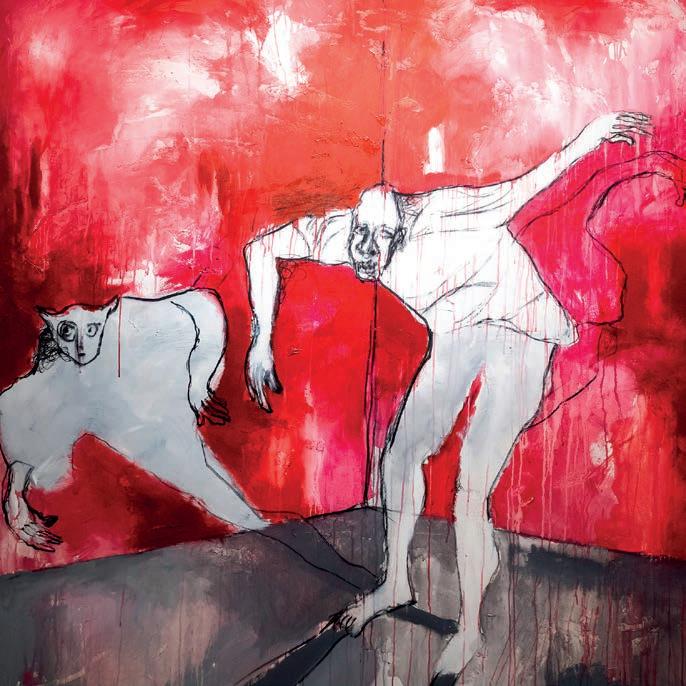







Millennium bim and Camões – Centro Cultur al Português (Portuguese Cultural Centre) present ed the exhibition “A Dança das Som bras” (“Dancing Shadows”), by the visual artist known as Butcheca, one of the prominent names in the con temporary art scene in Mozambique.
Support for culture is one of Millen nium bim's areas of intervention, through its social responsibility pro gram “Mais Moçambique para Mim” (“More Mozambique for Me”). In this context, the Bank has supported nu merous artistic initiatives that take place across the country, from north to south, contributing to the dissem ination and preservation of Mozam bique's historical-cultural legacy.
“A Dança das Sombras” by Butcheca is open to the public and is a surprising solo show of a set of recent works. In the project, conceived for the Camões space, the artist presents works in spired by movement, dance, rituals, masks, identities and cultures; works that are distinctly diverse and yet unit ed by a common and unique thread.
"The promotion of national arts and support for the development of Mo zambican culture is one of the pil lars of action of the Millennium bim social responsibility program. In this sense, we are pleased to support Butcheca´s exhibition, which seeks to enhance our societal values, repre sented in works that exhibit all of the artist's technical and creative vigour, whilst exalting expressions, feelings and sensations" - declared José Reino da Costa, President of the Executive Committee of Millennium bim.
The project “A Dança das Sombras” is part of the 3rd edition of the Gala-Ga la Festival, an initiative that brings to gether, in the same week (12 to 18 Sep tember), the programming of various cultural spaces in the city of Maputo. In supporting the exhibition, Millenni um bim reinforces its commitment to actively contribute to the promotion of Mozambican culture, backing vari ous initiatives for the dissemination of heritage and artistic interdisciplinarity, as well as supporting various cultur al projects of entities that constitute a reference in the national cultural landscape.


 Fotografia: Anna Surovkova
Fotografia: Anna Surovkova
A gigante mundial de tecnologia expande o seu programa de recrutamento de talentos africanos para Mo çambique. É a primeira vez, na sua história, que a Microsoft recruta talento no país para integrar a sua força de trabalho como Software Engineer’s, em mais de 30 anos da sua presença em África. Claúdio da Silva, consultor sénior de dados e inteligência artificial da Microsoft, por sinal moçambicano, falou em exclusivo à revista Xonguila, tendo explicado o processo de selecção dos candidatos à sonhada vaga.
Há exactamente 47 anos, no mesmo ano em que Moçambique declarou a sua independência nacional (1975), nascia a Micro soft (Nasdaq:MSFT), empresa líder mundial em software, serviços e soluções que ajudam as pessoas e empresas a atingirem seu pleno potencial.
A multinacional norte-americana está presente em África há pelo menos três décadas, com gran des investimentos nas áreas de ciência e tecnologia e áreas afins que têm impactado o crescimen to económico do continente. No ano passado, a empresa criou a divisão Escritório de Transforma ção de África (ATO, sigla em inglês) para impulsionar o investimento e acelerar o crescimento digital sustentável de África “movida por africanos para África”. “A Microsoft estabeleceu no ano passado o Africa Transformation Office com a missão de actuar na estratégia de crescimento digital de África, focando-se em cinco áreas princi pais: Infra-estrutura Digital, Capa citação, PMEs, Start-ups e Parcerias Estratégicas. Mais recentemente, foi criada uma nova subsidiária, o Africa Regional Cluster (ARC) que será responsável pelas iniciativas estratégicas em todo o continen te”, disse Claúdio Da Silva, consultor
sénior da companhia. Segundo Da Silva, mestrado com especializa ção na área de Data Mining e Data Warehousing, a Microsoft tem pla nos para apoiar mais de 10.000 start-ups africanas nos próximos 5 anos. A ideia é criar uma série de programas no continente, atra vés de parcerias estratégicas com aceleradores e incubadoras de startups. “Prevê-se, ao longo dos próximos anos, que a companhia apoie a capacitação de cerca de 10 milhões de PMEs em África através de tecnologia, infra-estru turas, capacitação e parcerias es tratégicas que visam impulsionar a criação de emprego e riqueza no continente. Como também se prevêem vários apoios para a ace leração do crescimento de cerca de 10.000 startups africanas e in vestimentos no ecossistema de startups do continente”, explicou o especialista, natural da cidade da Beira. A Microsoft Garage é mais um exemplo alinhado às estraté gias digitais para melhor atender às necessidades de África. “Estes centros de incubação fazem parte dos esforços para acelerar a ino vação tecnológica no continente. Finalmente, a expansão de cloud data centers do Azure para regiões de África (em Joanesburgo e Ci dade Cabo) em 2019 representou um milestone significativo para o continente, permitindo atrair no
vas oportunidades de negócios e investimentos globais, assim como melhorar o acesso a inter net e serviços de cloud por toda a África”, argumentou Da Silva quan to às perspectivas que se abrem aos africanos com as iniciativas da Microsoft em curso no continente.
O sonho de muitos jovens afri canos, em particular moçambi canos, entusiastas da tecnologia, de trabalhar numa das maiores empresas do mundo desse ramo tecnológico está perto de se tor nar realidade. A Microsoft procura recrutar em Moçambique talento para integrar a sua força de traba lho. A iniciativa surge no âmbito de um programa continental da iniciativa da Microsoft que pre tende alcançar e recrutar talentos africanos para fazerem parte da sua força de trabalho como Sof tware Engineers para as equipas de Redmond, nos Estados Unidos, e Vancouver, no Canadá. “Para esta vaga, a Microsoft procura re cém-graduados ou estudantes finalistas de um curso de bacha relado ou mestrado em enge nharias, ciência da computação ou áreas afins. Com capacidade de demonstrar conhecimento dos fundamentos da ciência da computação, incluindo estrutura de dados e algoritmos. E também



que tenham experiência em pro gramação numa das linguagens orientada a objectos (C#, C++, Java, Python, etc.)”, explicou o responsá vel pela implementação do pro grama em Moçambique. Claúdio Da Silva não podia estar mais hon rado e orgulhoso de si próprio por liderar o programa transformador no país que o viu nascer: “Quando surgiu esta oportunidade dentro da companhia, senti ser um dever meu, como moçambicano que sou, incluir o nome do nosso país na lista de potenciais países para a procura de talentos para integrar a força de trabalho da Microsoft nos EUA. É com orgulho que lidero a iniciativa, e seria uma satisfação enorme poder trazer talentos mo çambicanos para trabalharem na sede da Microsoft em Redmond”.
O processo de candidaturas ar rancou em Agosto e abrange todo o território nacional, sem limites de idade e género. Enco rajam-se interessados de todas as províncias e com perfil diversifica do a se candidatarem. Os candi datos que forem seleccionados serão convidados para a primeira fase das entrevistas. As vagas fe cham assim que forem preenchi das após as entrevistas finais. “De momento, já estou a colaborar com as maiores universidades de Moçambique na divulgação do programa, na preparação e apoio aos candidatos, e também a dar a conhecer a cultura, as compe tências e os valores que a Micro soft procura, de modo a poten cializar os skills dos estudantes e assim permitir que estes tenham preparação adequada que lhes permita chegarem à recta final no processo de recrutamento”. Este é o processo, que decor re em paralelo em outros países africanos. Os líderes de cada país, que lideram a iniciativa do pro grama, colaboram directamente com as universidades e dão as sistência e acompanhamento na preparação dos candidatos. Mas esta relação não termina por aí, o acompanhamento será continuo. Mesmo depois de fazerem parte
da companhia, estarão a receber apoio sobre a cultura da Micro soft, mentoria, onboarding, on -the-job training e, além do mais, entram para o track do Microsoft Aspire Experience, que é uma ex periência de dois anos de apren dizagem e desenvolvimento pro fissional para recém-graduados.
“Esperemos ter mais programas semelhantes que beneficiem a comunidade africana e, em espe cial, Moçambique, pela Microsoft como também por outras tec nológicas da mesma dimensão”, disse Da Silva, com optimismo em relação ao futuro.
África é um continente em ascen são para capacidades científicas e tecnológicas, e existe uma abun dância de oportunidades por ex plorar. Quase 60% da população do continente tem menos de 25 anos de idade. De acordo com o African Youth Survey (Inquérito à Juventude Africana) de 2020, 78% dos jovens estão interessados em seguir uma carreira em tecnolo gia. Os gigantes mundiais, como a Microsoft, estão interessados em potenciar e capitalizar estes talen tos e fizeram muito investimento em África, recentemente. Em 2019, a Microsoft e o Banco Africano de Desenvolvimento lançaram o Co ding for Employment (Programa de Codificação para o Emprego), para equipar os jovens africanos com competências em tecnolo gias de informação e comunica ção orientadas para a procura, de modo a posicioná-los de forma competitiva para o mercado de trabalho global.
“A Microsoft já vem investindo em Africa há algum tempo. compro metendo-se com o desenvolvi mento de talento no continente. Uma das apostas da companhia é a capacitação digital de estudan tes, desenvolvedores de start-ups, PMEs, desempregados e comuni dades mais desfavorecidas onde se prevê que sejam abrangidos cerca de 30 milhões de africa nos num futuro próximo”, revelou
Da Silva. O programa Coding for Employment do Banco Africano de Desenvolvimento estabeleceu centros de tecnologias de infor mação e comunicação com uni versidades parceiras em todos os países onde opera e proporcio nou formação de competências digitais a mais de 150.000 jovens. O objectivo é ampliar o progra ma para 130 centros de excelên cia em todo o continente por um período de 10 anos e criar milhões de empregos, criando sinergias com o sector público e privado em todo o mundo, para fornecer habilidades ágeis e colaborativas, orientadas pela demanda, para capacitar os jovens a se tornarem verdadeiros players inovadores na economia digital.
Os centros de desenvolvimento de Africa (ADC, sigla em inglês) da Microsoft que estão situados em Lagos e Nairobi são também um exemplo de uma história de su cesso para a companhia no con tinente. "Em Nairobi, por exemplo, a Microsoft já conta com mais de 450 trabalhadores a tempo inte gral, e em tendência crescente, actuando em áreas como enge nharia de software, machine lear ning, ciência de dados, pesquisa de mercado, infra-estrutura, além de outros", disse, acrescentando que os projectos da Microsoft em África vão potenciar o talento dos africanos. “Acredito que este tipo de iniciativas vai ajudar na visi bilidade do talento africano nas áreas de tecnologias e a estabe lecer a África como um hub de inovação, uma vez que a Micro soft tem apostado fortemente no mercado tecnológico africano, reforçando parcerias estratégicas e o seu compromisso de capa citação de talento”, concluiu Da Silva.
Com estes investimentos a longo prazo, que traduzem uma aposta forte da Microsoft em África, es pera-se que a próxima grande descoberta científica ou tecno lógica do Séc. XXI venha a ocorrer em solo africano.
 Written by: Jaime Álvaro
Written by: Jaime Álvaro
The global tech giant is expanding its African talent recruitment program to Mozambique. It is the first time in its history that Microsoft has recruited talent in the country to integrate its workforce as a Software Engineers, in more than 30 years of its presence in Africa. Claúdio Da Silva, Microsoft's senior data and artificial intelligence consultant, also a Mozambican, spoke exclusively to Xonguila magazine to explain the process of selecting candidates for the much dreamed of job.
Exactly 47 years ago, in the same year that Mo zambique declared its national independence (1975), Microsoft (Nasdaq:MS FT) was born, a world leader in software, services and solutions that help people and compa nies reach their full potential.
The North American multina tional has been present in Africa for at least three decades, with large investments in science and technology and related fields that have impacted the continent's economic growth. Last year, the company creat ed the Africa Transformation Office (ATO) division to drive investment and accelerate Af rica's sustainable digital growth “driven by Africans for Africa”. “Last year, Microsoft established the Africa Transformation Office with a mission to act on Africa's digital growth strategy, focusing on five main areas: Digital In frastructure, Capacity Building, SMEs, Start-ups and Strategic Partnerships. More recently, a new subsidiary was created, the Africa Regional Cluster (ARC) which will be responsible for strategic initiatives across the continent”, said Claúdio Da Sil va, a senior consultant with the company. According to Da Silva, who holds a Masters in the fields of Data Mining and Data Ware
housing, Microsoft has plans to support more than 10,000 Afri can start-ups in the next 5 years. The idea is to create a series of programs on the continent through strategic partnerships with accelerators and start-up incubators. “Over the next few years, the company is expect ed to support the training of around 10 million SMEs in Afri ca through technology, infra structure, capacity building and strategic partnerships that aim to boost the creation of jobs and wealth on the continent. It is also expected to provide all kinds of support to accelerate the growth of around 10,000 Af rican start-ups and investments in the start-up ecosystem of the continent”, explained the spe cialist, born in the city of Beira. Microsoft Garage is another ex ample aligned with digital strat egies to better meet the needs of Africa. “These incubation centres are part of efforts to ac celerate technological innova tion on the continent. Lastly, the expansion of Azure cloud data centres to African regions (in Johannesburg and Cape Town) in 2019 represented a significant milestone for the continent, allowing it to attract new busi ness opportunities and global investments, as well as improve internet access and services across Africa”, argued Da Silva,
regarding the prospects that are opening up to Africans with Microsoft's ongoing initiatives on the continent.
The dream of many young Af ricans who are technology en thusiasts, particularly Mozam bicans, of working in one of the largest companies in the world in this technological field is close to becoming a reality. Microsoft seeks to recruit talent in Mozambique to integrate its workforce. The initiative comes as part of a continental pro gram of Microsoft's that aims to reach and recruit African talents to be part of its workforce as Software Engineers for teams in Redmond, in the United States, and Vancouver, in Canada. “For this position, Microsoft is look ing for recent graduates or final year students on a bachelor's or master's degree in engineering, computer science or a related field. With the ability to demon strate knowledge of computer science fundamentals, includ ing data structure and algo rithms. And they must also have programming experience in one of the object-oriented lan guages (C#, C++, Java, Python, etc.)”, explained the person re sponsible for implementing the program in Mozambique. Claúdio Da Silva could not be
more honoured and prouder of himself for leading the trans formative program in the coun try where he was born: “When this opportunity arose within the company, I felt it was my duty, as the Mozambican that I am, to include our country´s name on the list of potential countries to look for talent to join Microsoft's US workforce. I am proud to lead the initiative, and it would be a great satisfaction to be able to bring Mozambican tal ent to work at Microsoft's head quarters in Redmond”.
The application process began in August and covers the entire national territory, with no age or gender limitations. Interested parties from all provinces and with a diverse profile are en
couraged to apply. Candidates who are selected will be invited to the first round of interviews. Vacancies close as soon as they are filled after the final in terviews. “At the moment, I am already collaborating with the largest universities in Mozam bique to publicize the program, prepare and support candi dates, and also to make known the culture, skills and values that Microsoft seeks, in order to en hance the students' skills and thus allow them to have ade quate preparation that will allow them to reach the final stretch in the recruitment process”. This is the process, which is simul taneously taking place in other African countries. The leaders of each country, who lead the program initiative, collaborate
directly with the universities and provide assistance and follow-up in the preparation of candidates. But this relation ship does not end there; the follow-up will be ongoing. Even after joining the company, they will be receiving support on the Microsoft culture, mentoring, onboarding, on-the-job train ing and, in addition, they will be on track for the Microsoft Aspire Experience, which is a two-year job experience of learning and professional development for recent graduates. “We hope to have more of similar programs that benefit the African com munity and, in particular, Mo zambique, through Microsoft as well as other tech companies of the same size”, said Da Silva, with optimism about the future.

Africa is a rising continent for scientific and technological ca pabilities, and there are plen ty of untapped opportunities. Almost 60% of the continent's population is under 25 years of age. According to the 2020 Afri can Youth Survey, 78% of young people are interested in pur suing a career in technology. Global giants such as Microsoft are interested in leveraging and capitalizing on these talents and have made a lot of investment in Africa recently. In 2019, Mi crosoft and the African Devel opment Bank launched Coding for Employment to equip young Africans with demand-driven information and communica tion technology skills to posi tion them competitively for the global job market.
“Microsoft has been investing in Africa for some time and is committed to the develop ment of talent on the continent. One of the company's focus ar eas is the digital empowerment

of students, start-up develop ers, SMEs, the unemployed and disadvantaged communities, expecting to reach around 30 million Africans in the near fu ture”, revealed Da Silva. The Afri can Development Bank's Cod ing for Employment program has established information and communication technol ogy centres with partner uni versities in every country where it operates and has provided digital skills training to over 150,000 young people. The aim is to expand the program to 130 centres of excellence across the continent over a period of 10 years and create millions of jobs, creating synergies with the public and private sector worldwide, to provide agile and collaborative, demand-driven skills, and to empower young people to become true innova tive players in the digital econ omy.
Microsoft's Africa Development Centres (ADC) located in Lagos and Nairobi are also an exam
ple of a success story for the company on the continent. "In Nairobi, for example, Microsoft already has more than 450 fulltime workers, and expected to grow, working in areas such as software engineering, machine learning, data science, market research, and infrastructure, among others", he said, adding that Microsoft's projects in Af rica will enhance the talent of Africans. “I believe that this type of initiative will help to increase the visibility of African talent in the technology sector and to establish Africa as an innovation hub, since Microsoft has invest ed heavily in the African tech nological market, reinforcing strategic partnerships and its commitment to talent training”, concluded Da Silva.
With these long-term invest ments, which reflect Microsoft´ strong commitment to Africa, it is expected that the next great scientific or technological dis covery of the 21st century will take place on African soil.

 Marta Humbane e a
moçambicano
Marta Humbane e a
moçambicano
 Fotografia: Mariano Silva
Fotografia: Mariano Silva

Nos últimos tempos, temos vivido num contexto em que a econo mia está cada vez mais assente nas PME, especialmente pela capa cidade destas de criação de em prego, geração de renda e grande flexibilidade como instrumento para colocar em prática ca pacidade empreendedora e inovadora.
Cientes dos enormes desafios socioeconómi cos que as PME enfrentam, o Absa Bank Mo çambique lançou uma nova campanha de comunicação dirigida a clientes empresariais com o objectivo de divulgar a sua oferta de produtos e serviços e destacar a capacidade do Banco para servir este segmento com solu ções que fazem a diferença.
A recém-nomeada Martha Humbane conta -nos, em discurso directo, pormenores sobre tal novo projecto do Banco:

“Esta campanha ilustra o compromisso total do Absa com o apoio à recuperação da economia e a confiança na capacidade e resiliência das empresas e dos empresários. Tendo em conta o actual cenário macroeconómico, quisemos mostrar, também por esta via, que estamos pró ximos dos nossos actuais e potenciais clientes empresariais, compreendemos as necessidades do seu negócio e estamos preparados para os apoiar com um conjunto de soluções inovadoras à sua medida, colocando ao seu serviço uma ex periência de mais de 40 anos no segmento em presarial”, afirma Martha Humbane.
Na prática, esta campanha destina-se a todas as empresas moçambicanas que procuram um
banco que não seja apenas um prestador de serviços, mas, acima de tudo, um parceiro de negócios. Com um foco primordial nas empre sas com menos de 500 colaboradores, a cam panha incentiva a utilização dos canais digitais do Absa Bank Moçambique e todos os serviços que o Banco disponibiliza para impulsionar cada negócio. A construção desta campanha e das soluções que oferece foi pensada com base em um trabalho de campo, de quem faz as coisas acontecerem, dando uma visão 360º das neces sidades reais do segmento e criando as soluções certas para que estas empresas possam dar um passo em frente, consolidando o seu negócio, ampliando-o e criando novas oportunidades de uma forma consistente.
“Para além de estar ao lado das empresas que já fazem parte do ADN do Absa, agora e mais do que nunca o Banco está também ao lado dos pequenos e médios negócios, apoiando-os de forma a que possam inovar, reinventar e trans formar os desafios em oportunidades, e impul sionando-os para que, com o nosso apoio, se elevem ao próximo nível”, conclui Martha Hum bane.
Em suma, com esta campanha, o Absa Mo çambique reafirma a proximidade, juntando a voz dos seus clientes à sua. Para além da ofer ta de produtos e serviços bancários tradicional, o Banco procura contribuir para o empodera mento, robustez, profissionalização, exposição e acesso a novos mercados, criando parcerias sustentáveis e dando acesso à formação e à certificação, garantindo a capacitação destas Pequenas e Médias Empresas para um mercado cada vez mais globalizado.
No início de Setembro, Martha Humbane foi nomeada Directora da Banca de Retalho e Negó cios do Absa Moçambique, nomeação essa que ocorre num momento em que o Banco reafirma o seu posicionamento como parceiro das Pequenas e Médias Empresas nacionais


In recent times, we have been living in a context such that the economy is increas ingly reliant on SMEs, especially for their ability to create jobs and generate income, as well as their greater flexibility as an instru ment to put entrepreneurial and innovative ca pacity into practice.
Aware of the enormous socio-economic chal lenges that SMEs face, Absa Bank Moçambique launched a new communications campaign aimed at Business clients, with the aim of pub licizing its product and service offerings and highlighting the Bank's ability to serve this seg ment with solutions that make a difference.
The newly appointed Martha Humbane shares with us first-hand details about the Bank´s new project:

“This campaign reflects Absa's total commit ment to supporting the recovery of the econ omy and confidence in the capacity and resil ience of companies and entrepreneurs. Taking into account the current macroeconomic sce nario, we also wanted to show, in this way, that we are close to our current and potential busi ness customers, that we understand the needs of their business and are prepared to support them with a set of innovative solutions tailored to their needs, placing at their service an ex perience of more than 40 years in the business segment”, says Martha Humbane.
In practical terms, this campaign is aimed at all Mozambican companies looking for a bank that is not just a service provider, but, above all, a business partner. With a primary focus on companies with less than 500 employees, the campaign encourag es the use of Absa Bank Moçambique's digital chan nels and all the services that the Bank provides to boost each and every business. This campaign and the solutions it offers were designed on the basis of field work from those who make things happen, benefiting from a 360º view of the real needs of the segment and creating the right solutions for these companies to move forward, consolidate and ex pand their business, creating new opportunities in a consistent way.
“In addition to being on the side of companies that are already part of Absa's DNA, now and more than ever, the Bank is also on the side of SMEs, support ing and enabling them to innovate, reinvent and transform challenges into opportunities, as well as support them in advancing into the next level”, con cludes Martha Humbane.
In short, with this campaign, Absa Mozambique reaf firms its closeness, adding Client´s voices to its own. In addition to offering traditional banking products and services, the Bank seeks to contribute to the empowerment, strength, professionalization, visibil ity and access to new markets, creating sustainable partnerships and providing access to training and certification, ensuring that these SMEs are building capacity for an increasingly globalized market.
At the beginning of September, Martha Humbane was appointed Director of Retail and Business Banking at Absa Moçambique, an appointment that comes at a time when the Bank is reaffirming its position as a partner of local Small and Medium-sized Enterprises (SMEs).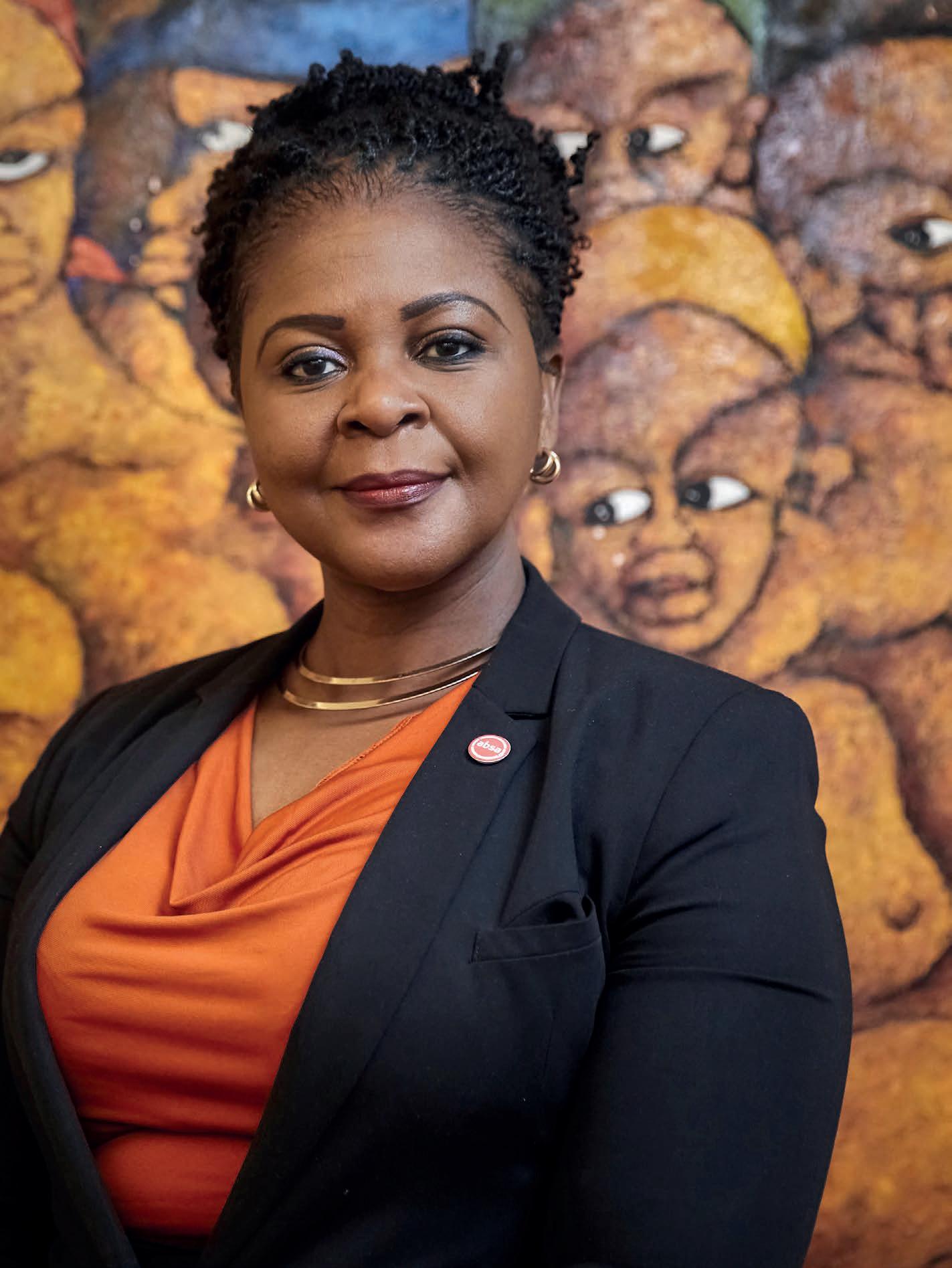 Fotografia: Mariano Silva
Fotografia: Mariano Silva
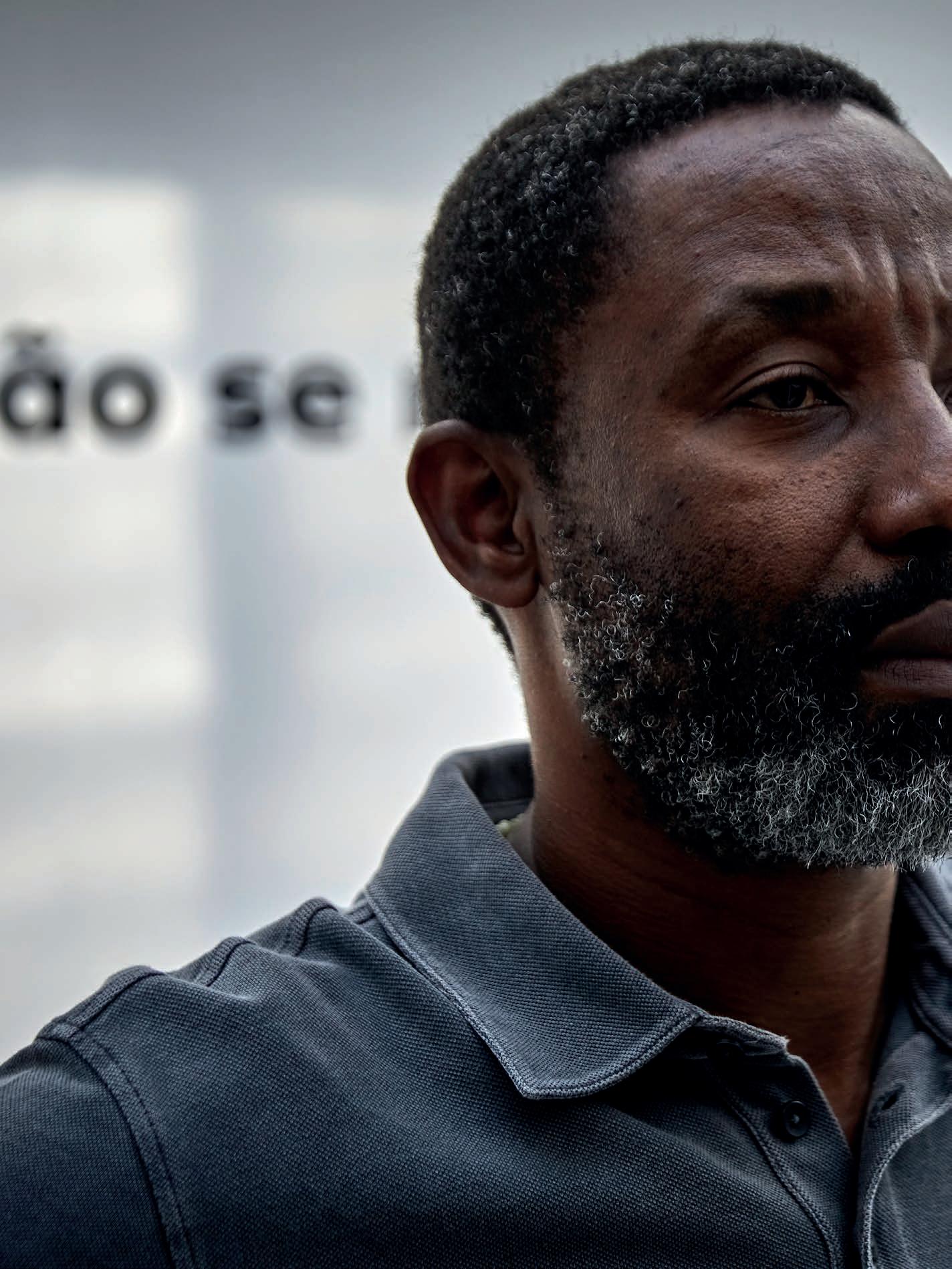 Fotografia: Mariano Silva
Fotografia: Mariano Silva
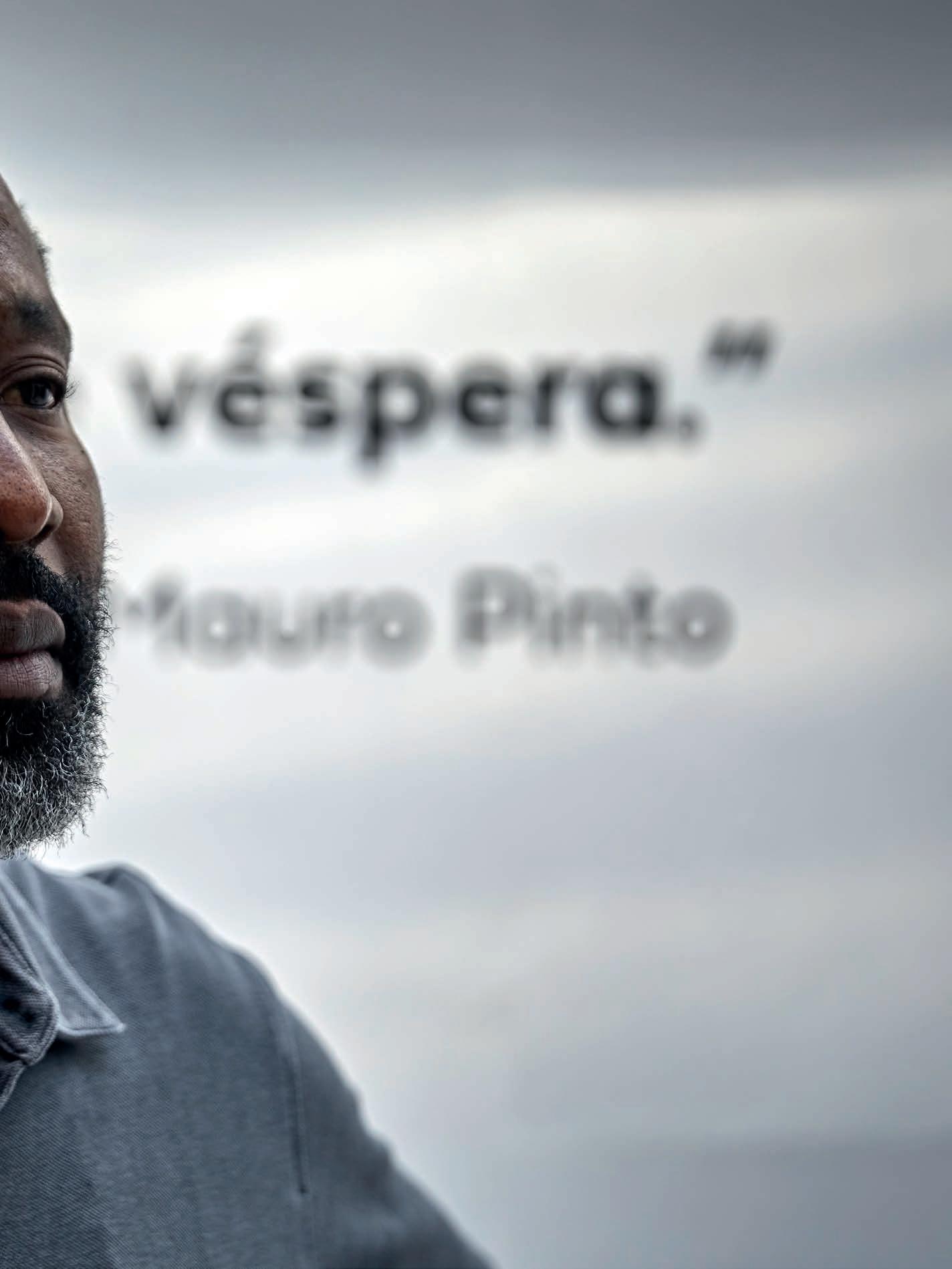

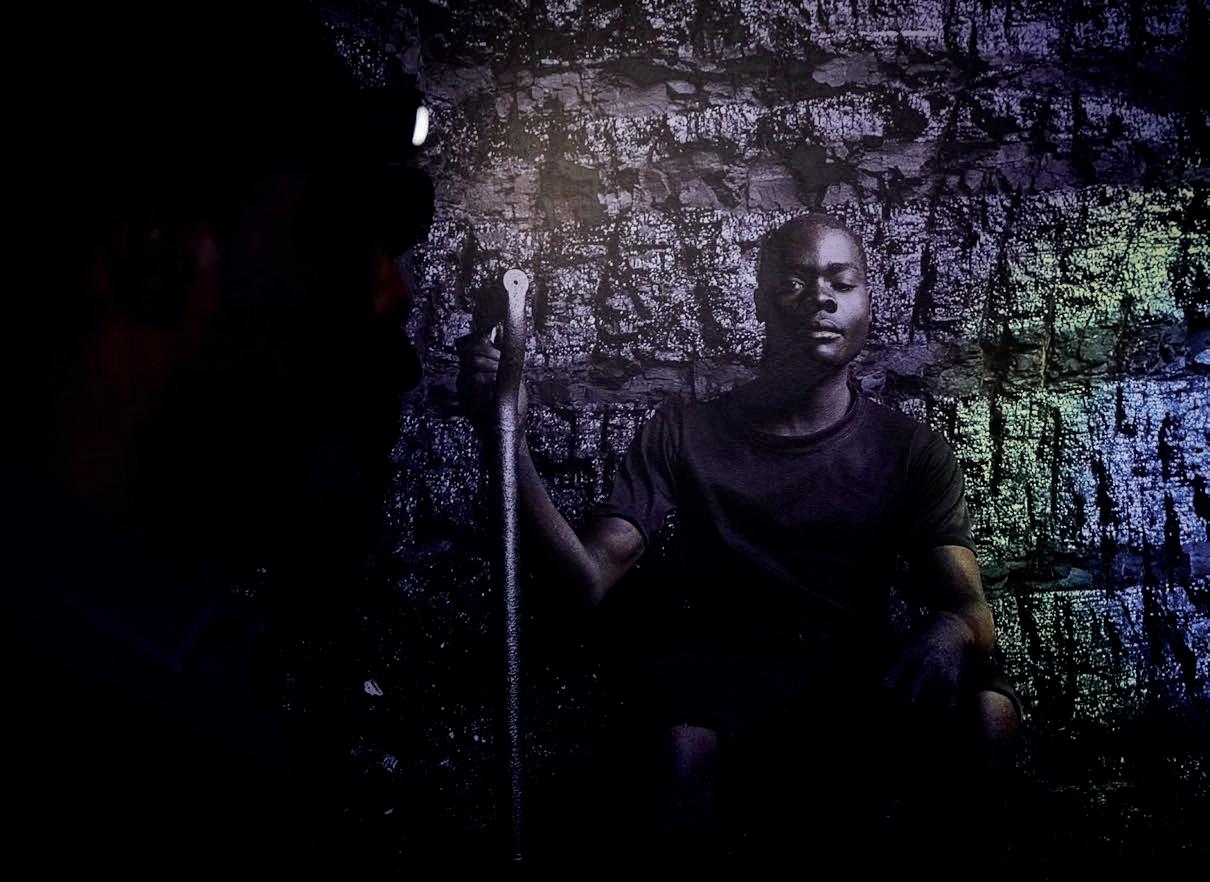
Ainda no ventre da sua mãe, já sentia a arte dominar a sua existência. O quotidiano marcado pela presença de familiares e pessoas próximas que dela faziam um modo de vida trans mitia ao novo ser que a sua vida só faria sentido após contacto com o misterioso universo das artes. Mauro Pinto nun ca teve dúvidas de que a arte o tinha escolhido para melhor se comuni car com o mundo: “Posso dizer que tudo começou dentro da barriga da mi nha mãe. Ela tinha uma prima que era esposa de um artista. Além disso, ti nha um tio de que talvez já tenham ouvido falar, o Jaimito Machatine, que foi um dos primeiros gui tarristas de Moçambique. Comecei a ter esse con
tacto com a arte dentro da barriga da minha mãe, e isso ficou no meu sub consciente”.
Já no ensino primário, Mauro teve contacto com o fotógrafo Alexan dre Júnior, pai de um dos seus colegas de escola e seu vizinho, aconteci mento que fez despertar o “bichinho” que já car regava dentro de si. Com o tempo, o chamamento foi ganhando mais vida. Procurando abrigar-se na pintura, cedo perce beu que era na fotografia que encontrava expres são mais completa da sua existência. “Usava a pintura como forma para poder me expressar. Sou um pouco introvertido e, por isso, prefiro que as coisas falem por mim. No entanto, sentia que a pintura não conseguia
Fotografia: Mariano Silvatransmitir aquilo que queria e acabou por encontrar na fo tografia tudo o que procurava para se fazer chegar ao mundo.
Assim, no final da década de 90, faz um curso de fotogra fia pela Monitor Internacional School, e, na mesma altura, um
estágio com o fotógrafo José Machado. Em 2002 passa a en carar a fotografia de maneira profissional.
No desenvolvimento do seu trabalho, Mauro Pinto procura sempre gerar reflexões sobre a vida social. As suas fotografias são repletas de expressividade e convidam a mente a sair de si e penetrar no outro, para um estado de existência cada vez mais empático. “Parto do prin cípio de que todos nós temos o dever de cidadania e ética profissional. Eu olho sempre para as pessoas mais desfavo recidas e penso que devemos olhar mais para o outro de for ma a melhoramos a saúde so cial e pública. É importante ha ver discussão para melhorarmos o nosso bem-estar como indi víduos. Estamos neste mundo de passagem e não podemos ter receio de falar. Eu sou um “artivista”, por isso digo, com fre quência, esta frase da minha au
toria “Não se morre de véspera”.
O fotógrafo e “artivista” (artista e activista) reúne trabalhos ao longo da carreira que convidam a análises e reflexões sociais. Tal é o caso do projecto “Visão de sintegrada”, em que Mauro fo tografou doentes mentais em ruas e hospitais psiquiátricos, ou até mesmo o projecto “Sim plesmente criança”, que en volvia uma série de fotografias sobre crianças de rua. Mauro Pinto não mais parou de militar desde a sua primeira exposição individual, em 2002. Seguiram -se mais 50 participações em exposições colectivas, com destaque para Photography by Ricardo Rangel and Mauro Pin to, Mgnin-A Gallery (2011), The Past, The Present and the Be tween, na bienal de Veneza, em Itália (2019).
A voz de Mauro Pinto ecoa um pouco por todo o mundo, por meio das suas fotografias. A sua obra está representada em vá rias colecções nacionais e inter nacionais, tais como Musée Du Quai Branly, Paris; Jean Pigozzi Contemporary African Art Col lection, Genebra; Colecção Ma nuel de Brito, Lisboa e College of Arts and Sciences, University of North, Carolina. O fotógrafo moçambicano colecciona pré mios nacionais e internacionais ganhos em reconhecimento do seu trabalho de excelência. Tais prémios incluem o prémio Ri cardo Rangel (2005), ganho no país, e, em 2012, o prémio BES Photo (Portugal), com o projecto fotográfico “Dá licença” em que, através de 12 fotografias capta das na Mafalala, retratou o inte rior de casas, paisagens, pessoas e ruas daquele bairro histórico.
Recentemente o públi co ficou a conhecer Blackmoney, a mais recente exposição fo tográfica de Mauro Pinto. Pa tente no Centro Cultural Fran co-Moçambicano, na cidade de Maputo, a mostra pretende gerar reflexões em torno do Homem e da Terra. Em Black money, Mauro Pinto traz uma visão delicada dos mineiros nas suas rotinas diárias de tra balho, traduzindo por meio de imagens o drama enfrentado nas minas e pelos mineiros em busca de condições para a sua sobrevivência. “Gosto de fo tografar coisas que penso se rem um pouco fora do normal, pessoas que trabalham em situações difíceis. Foi isso que
eu quis trazer para gerar uma reflexão colectiva e, de forma colectiva também, podermos resolver”.
A experiência da exposição vai muito além do visual, é uma exposição que pode ser ouvida e sentida com o coração. Nela o visitante tem a oportunidade de ter uma experiência visual e sonora pois a disposição das fotografias no local imita uma verdadeira mina de carvão mi neral. O áudio, que também imita o som das minas, ajuda o visitante a estar mais próximo da realidade retratada pelas fotos. Em dez fotografias, Mau ro Pinto fala de cultura, socie dade e economia sem sequer dizer uma palavra. Em Mapu
to a mostra é inaugurada dois anos depois de ter sido expos ta em Portugal e estará paten te até o dia 15 de Outubro.
Como qualquer artista, Mauro Pinto tem sonhos profissionais que alimentam as suas espe ranças para futuro e olha com alegria o que o presente já lhe permitiu realizar. “O maior so nho de um artista é poder ter o que eu estou a ter com esta exposição: ser surpreendido com a reacção das pessoas a cada dia. Vêm visitar a exposi ção pessoas que nunca entra ram numa galeria, num museu, num centro cultural. Para mim, este é o meu maior ganho, po der ter estas novas pessoas a ver a arte”, concluiu o artista

A experiência de Blackmoney vai muito além do visual, é uma exposição que pode ser ouvida e sentida com o coração
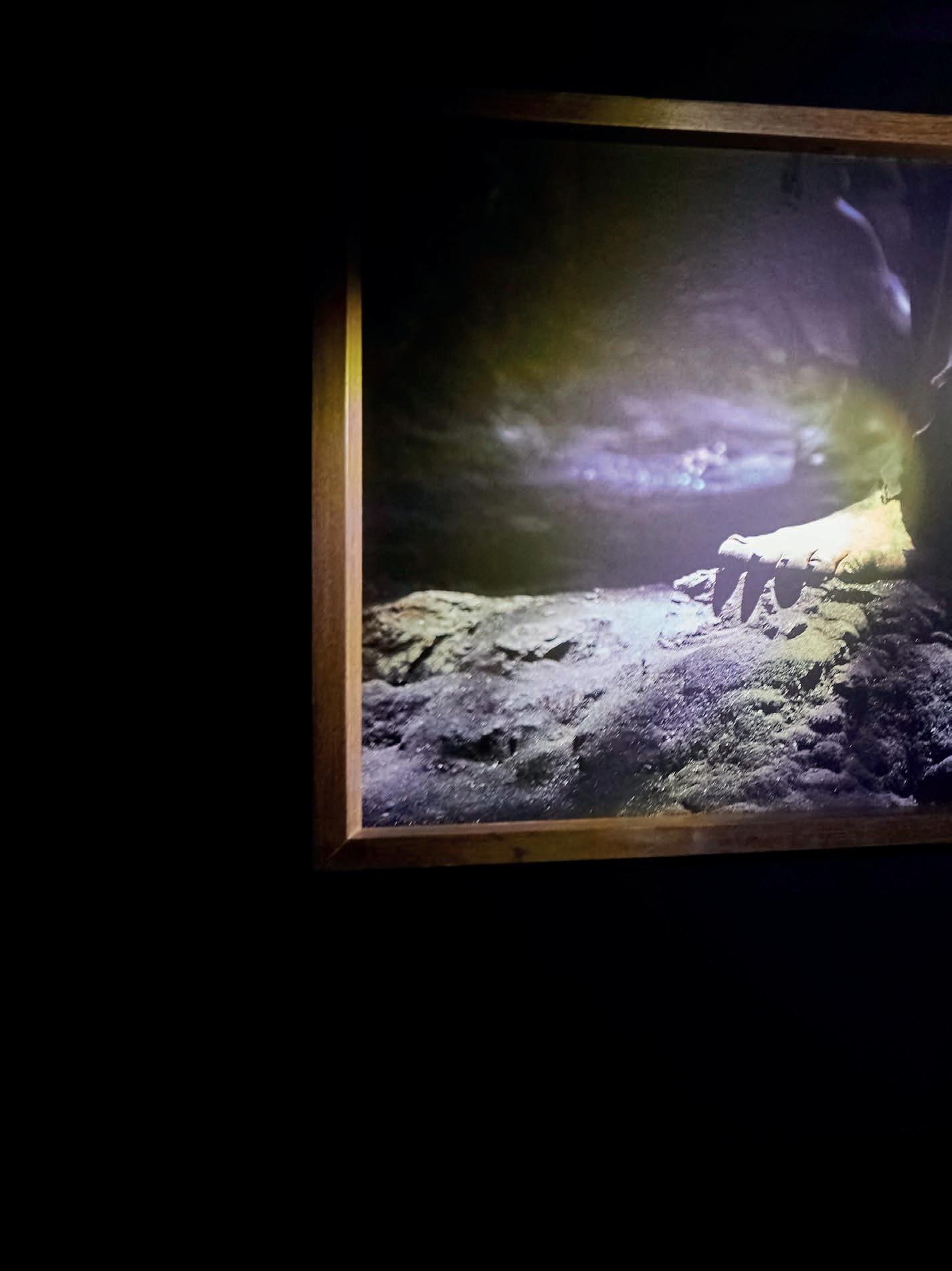
Vêm visitar a exposição pessoas que nunca entraram numa galeria, num museu, num centro cultural. Para mim, este é o meu maior ganho
 Mariano Silva
Mariano Silva
From the time he was in his mother's womb, he could al ready feel art dom inating his existence. The daily life marked by the presence of family mem bers and people close to her who made art a way of life conveyed to the new being that his own life would only make sense af ter contact with the mys terious universe of the arts. Mauro Pinto never had any doubts that art had chosen him to better communi cate with the world: “I can say that it all started in my mother's womb. She had a cousin who was an artist's wife. In addition, she had an uncle who you may have heard of, Jaimito Macha tine, who was one of the first guitarists in Mozam bique. I started to have this contact with art inside my mother's belly, and it stayed in my subconscious”.
Whilst in primary school,

Mauro had contact with the photographer Alexandre Júnior, who was the father of one of his schoolmates and his neighbour, an event that awoke the “little bug” he already carried inside him. Over time, the call took on more life. Looking for a home in painting, he soon realized that it was in pho tography that he found the most complete expres sion of his existence. “I used painting as a means to ex press myself. I'm a bit of an introvert, so I prefer things to speak on my behalf. Howev er, I felt that painting could not convey what I wanted and ended up finding in photography everything I was looking for to reach the world”. Thus, at the end of the 90s, he took a photogra phy course at the Monitor International School, and, at the same time, an internship with the photographer José Machado. In 2002, he began to regard photography in a professional way.
When devel oping his work, Mauro Pinto always seeks to generate reflec tions about social life. His photographs are full of expression and invite the mind to wander from self and penetrate the other, to wards an increasingly em pathic state of existence.
“I begin with the principle that we all have a duty of citizenship and professional ethics. I always look at the most disadvantaged peo ple, and I think we should look more to each other in order to improve social and public health. Discussion is important to improve our
well-being as individuals. We are in this world tem porarily, and we cannot be afraid to speak. I am an “artivist”, so I often say this phrase which I coined, “Não se morre de véspera” (“One cannot die before it is time”).
Throughout his career, the photographer and “artivist” (artist and activist) amassed work that invite social anal ysis and reflection. Such is the case of the project “Visão desintegrada” (“Frag mented vision”), in which Mauro photographed mentally ill people in the streets and psychiatric hos pitals, or even the project
“Simplesmente criança” (“Simply a child”), which involved a series of photographs of street children. Mauro Pinto never stopped be ing a militant since his first solo exhibition, in 2002. This was fol lowed by 50 more participations in group exhibitions, with empha sis on Photography by Ricardo Rangel and Mauro Pinto, Mgnin-A Gallery (2011), The Past, The Present and the Between, at the Venice Biennale, in Italy (2019).
Through his photographs, Mauro Pinto's voice echoes all over the world. His work is represented in several national and internation al collections, such as Musée Du Quai Branly, Paris; Jean Pigozzi Contemporary African Art Col lection, Geneva; Manuel de Brito Collection, Lisbon and College of Arts and Sciences, University of North Carolina. The Mozam bican photographer collects na tional and international awards
in recognition of his excellent work. Such prizes include the Ri cardo Rangel prize (2005) won in the country, and, in 2012, the BES Photo prize (Portugal), with the photographic project “Dá li cença” (a calling done in lieu of ringing the doorbell, equivalent to “knock-knock”), in which, over 12 photographs taken in Mafalala, he portrayed the interior of houses, landscapes, people and streets of that historic district.
Recently, the public got to know Blackmoney, Mau ro Pinto's most recent photographic exhibition.
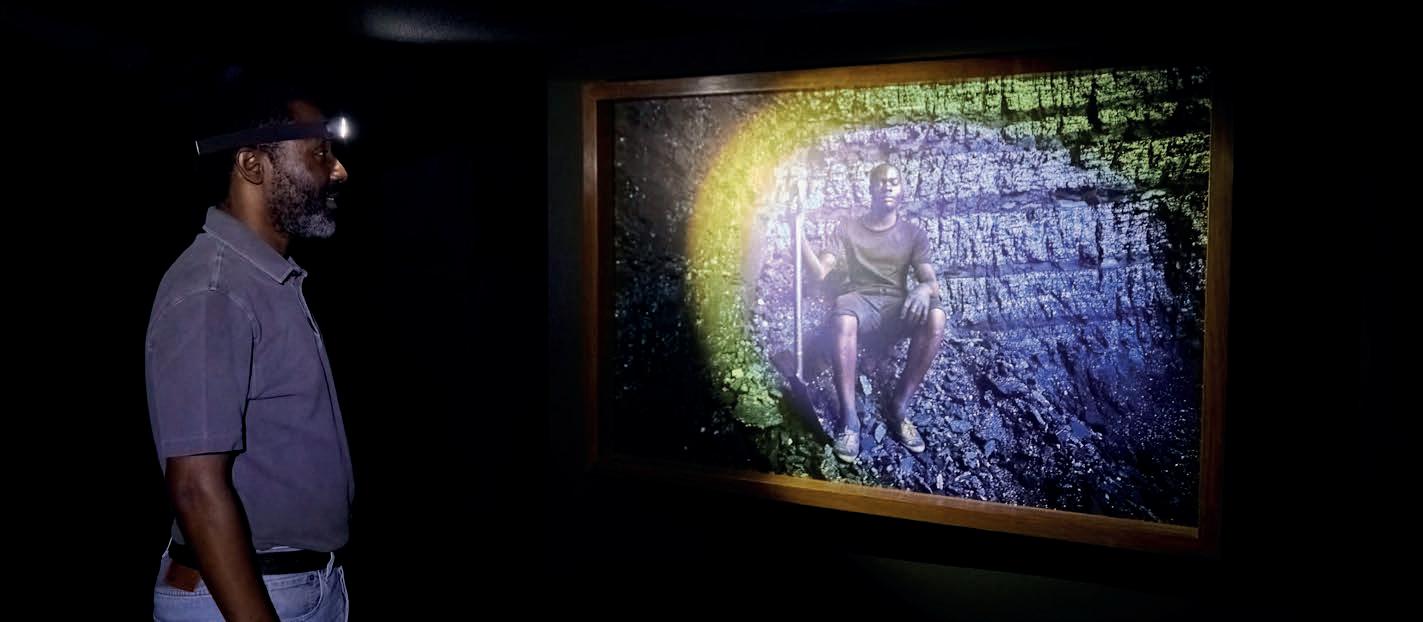
On display at the Franco-Mozam bican Cultural Centre, in the city of Maputo, the exhibition aims to generate reflections on Man and Earth. In Blackmoney, Mauro Pinto brings a delicate view of miners in their daily work routines, cap turing through images the drama faced in the mines and by miners in a search for their survival. “I like to photograph things that I think are a bit out of the ordinary, peo ple who work in difficult situations.
That's what I wanted to bring to
generate a collective reflection so that, also collectively, we may solve it”.
The exhibition experience goes far beyond the visual. It is an exhibition that can be heard and felt with the heart. In it, the visitor has the op portunity to have a visual and son ic experience as the arrangement of the photographs mimics a real coal mine. The audio, which also imitates the sound of the mines, helps the visitor to be closer to the reality portrayed in the photos. In ten photographs, Mauro Pinto talks about culture, society and the economy without uttering a single word. In Maputo, the show opened
two years after being shown in Portugal and will be on view until the 15th of October.
Like any artist, Mauro Pinto has professional dreams that feed his hopes for the future, and he looks on with joy at what the present has already allowed him to accom plish. “An artist's biggest dream is to be able to have what I'm getting with this exhibition: to be surprised by the reaction of people every day. People who have never been to a gallery, museum or cultural centre come visit the exhibition. For me, this is my biggest gain, be ing able to have these new people see art”, concluded the artist.
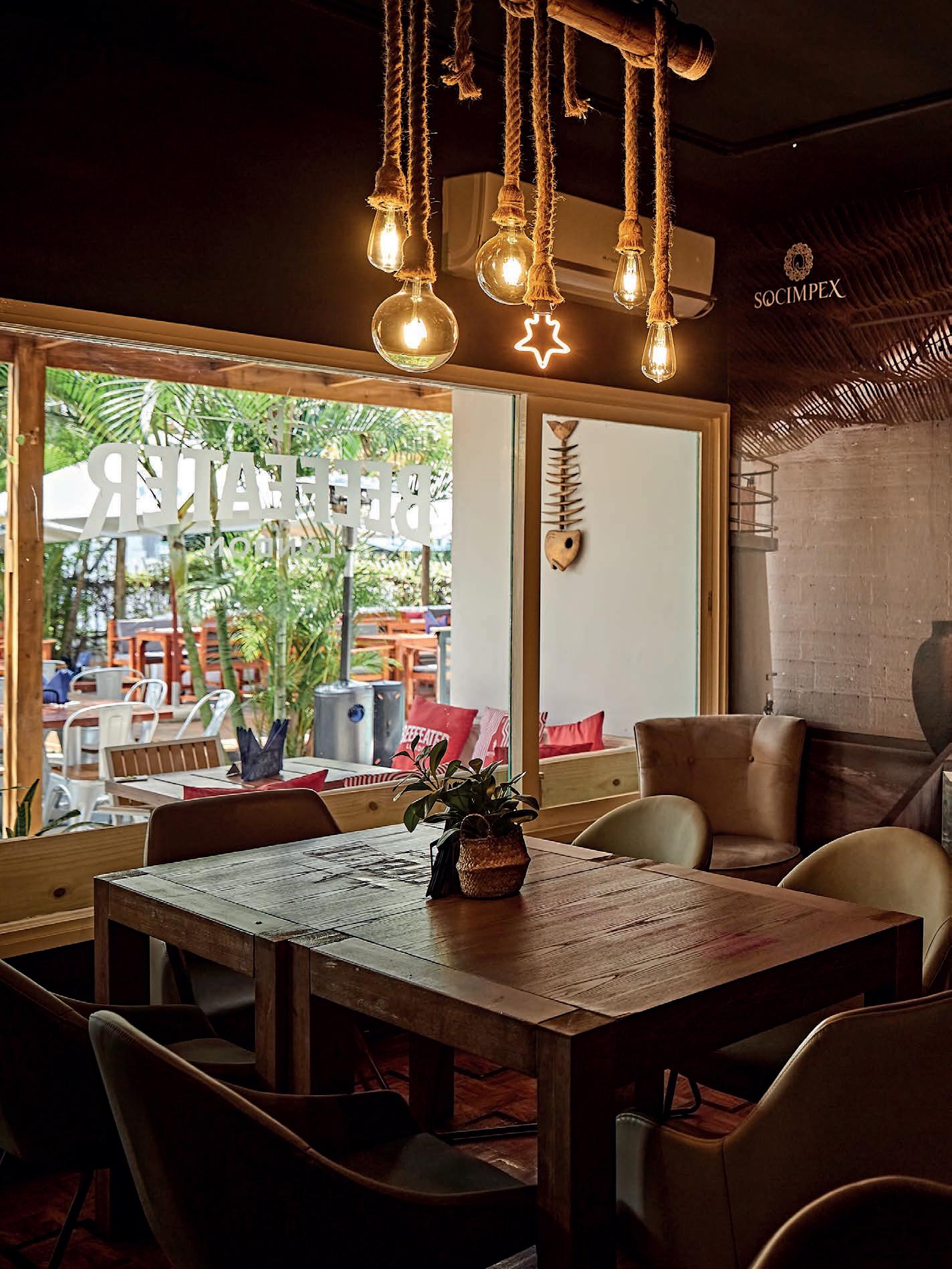
 Mariano Silva
Mariano Silva
Como ficou patente nas edições anteriores da Xonguila, já faz parte do nosso ADN dar a conhecer restaurantes e espaços que se destacam pela qualidade, ambiente, ementa, entre outros aspectos que consideremos serem cativantes, recomendan do-os ao nosso público como pontos interessantes a visitar. Nesta edição, levamo -lo ao restaurante 2+1 Maputo, uma nova proposta na capital, localizada no nº 15 da rua Pereira Marinho, no bairro da Sommerschield. Aqui conversámos com Emerson Guita, proprietário, que nos apresentou o seu estabelecimento:
“A alma do nosso restaurante resulta de uma simbiose entre o restaurante típico e o local gourmet. O meu falecido pai era apai xonado por gastronomia, viajava bastante e, de tanto conhecer locais pelo mundo fora, foi obtendo várias experiências e colhendo diversas inspirações. Em 1996 decidiu abrir um restaurante com take-away na cidade da Beira, cuja operação, com o passar do tempo, se foi consolidando, expandindo também para Lichinga, até chegar ao pon to em que hoje nos encontramos, com a abertura de um restaurante também em Maputo.
A nossa cozinha é híbrida, procurando sem pre dar enfoque à comida típica moçam bicana e ter uma representação de pratos de todo o país. Para os nossos pratos do dia, existem regularmente duas opções, sendo uma nacional e a outra de outros locais do mundo. Procuramos sempre utilizar pro dutos da região, e tencionamos continuar a fazê-lo, pois temos bons abastecedo res que nos fornecem artigos frescos e de qualidade. Estamos em constante recriação e inovação dos nossos menus para que o cliente não se canse e se sinta surpreen dido. Apesar de no momento ainda não fornecermos outros serviços para além do restaurante, é nossa intenção, num futuro próximo, prestar serviços de catering para instituições estatais e privadas ou a quem os desejar.
Acreditamos que, para um restaurante ser bem-sucedido, é necessário terem-se em mente alguns aspectos. Saber cozinhar e servir boa comida é um requisito muito importante, contudo é necessário conciliar com um atendimento cómodo aos clientes, estar numa localização estratégica, manter a equipa de trabalho engajada e motivada, ter as normas sanitárias locais devidamente adequadas e analisar estratégias para lidar com a concorrência. A comida não é o mais importante, mas é determinante. Há que ter em conta o serviço prestado, a segurança, a localização e também o preço ofertado.


Estamos atentos à imersão digital, acompa nhamos, estamos cientes dessa necessida de de evolução global. Abrimos contas em redes socias, plataformas em que fazemos a divulgação diária dos nossos serviços, e atendemos os pedidos dos clientes de for ma computadorizada. Ainda não atingimos o patamar almejado. O grande desafio no momento é servir à hora do almoço 120 pratos diários, assim como introduzir o pe queno-almoço.
No que concerne aos planos para o futuro, na hora certa iremos revelá-los, pois o se gredo é a alma do negócio. Entretanto, va mos melhorando dia após dia, tendo sem pre em mente que não existem limites para quem deseja ir longe e que todo o esforço engajado é sempre recompensado
“Para os nossos pratos do dia, existem regularmente duas opções, sendo uma nacional e a outra de outros locais do mundo”

 Fotografia: Mariano Silva
Fotografia: Mariano Silva

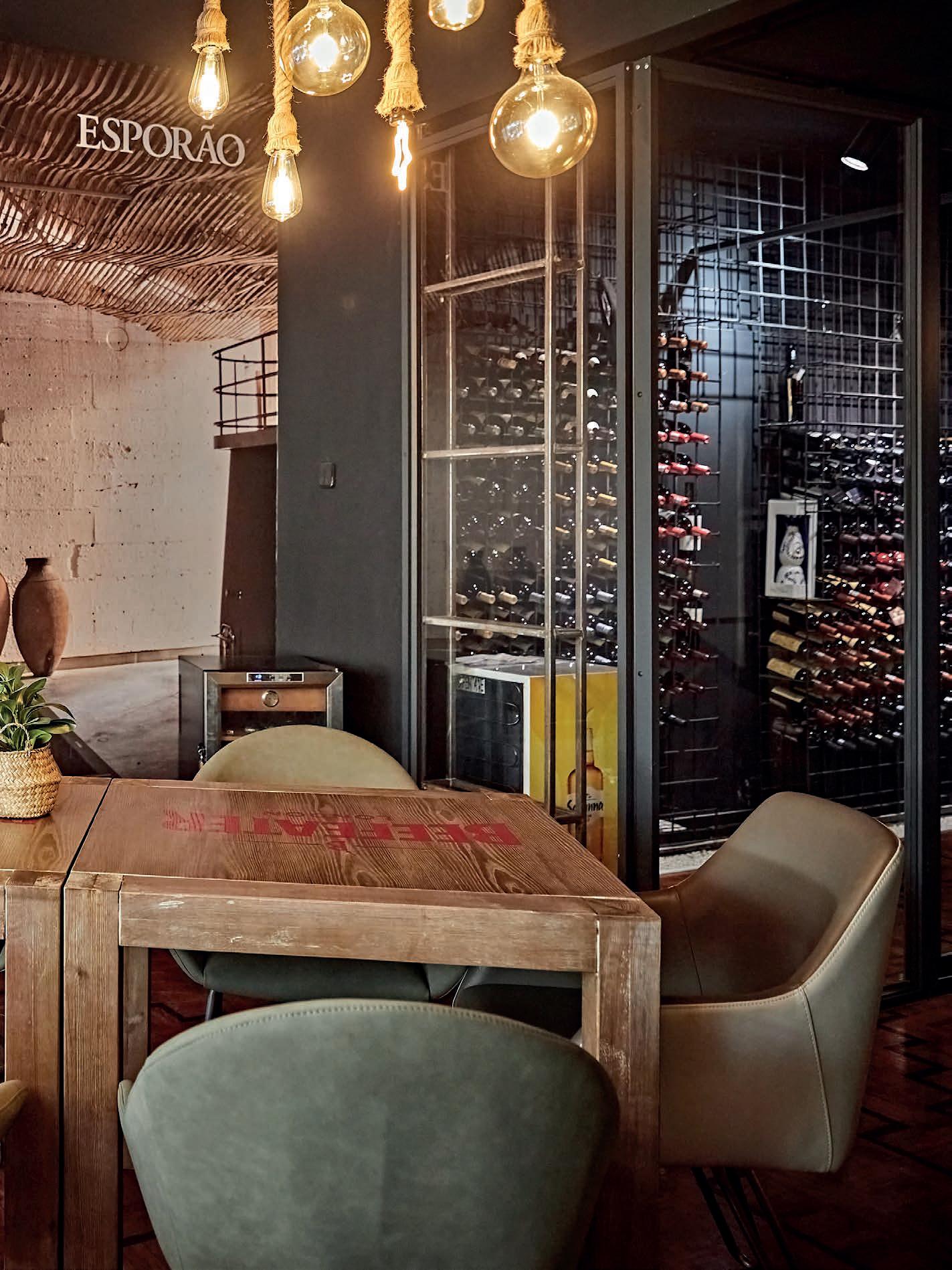
Estamos em constante recriação e inovação dos nossos menus para que o cliente não se canse e se sinta surpreendido
As evidenced in previous editions of Xonguila, it is by now an established part of our DNA to make it known about restaurants and spaces that stand out for their quality, atmosphere, menu, among other aspects that we consider to be captivating, and recommend them to our public as interesting places to visit. In this edition, we take you to the 2+1 Maputo restaurant, a new offering in the capital, located at 15 Rua Pe reira Marinho, in the Sommerschield neighbourhood. We spoke to the owner, Emer son Guita, who introduced us to his establishment:
“The soul of our restaurant results from a symbiosis between a typical restaurant and a gourmet eatery. My late father was passionate about gastronomy; he travel led a lot and, whilst getting to know pla ces around the world, he gained several experiences and collected several ins pirations. In 1996, he decided to open a take-away restaurant in the city of Beira,
and over time, his operation was conso lidated, also expanding to Lichinga, until it reached the point we are in today, with the opening of a restaurant in Maputo as well.
Our cuisine is hybrid, always with a focus on typical Mozambican food and having a representation of dishes from all over

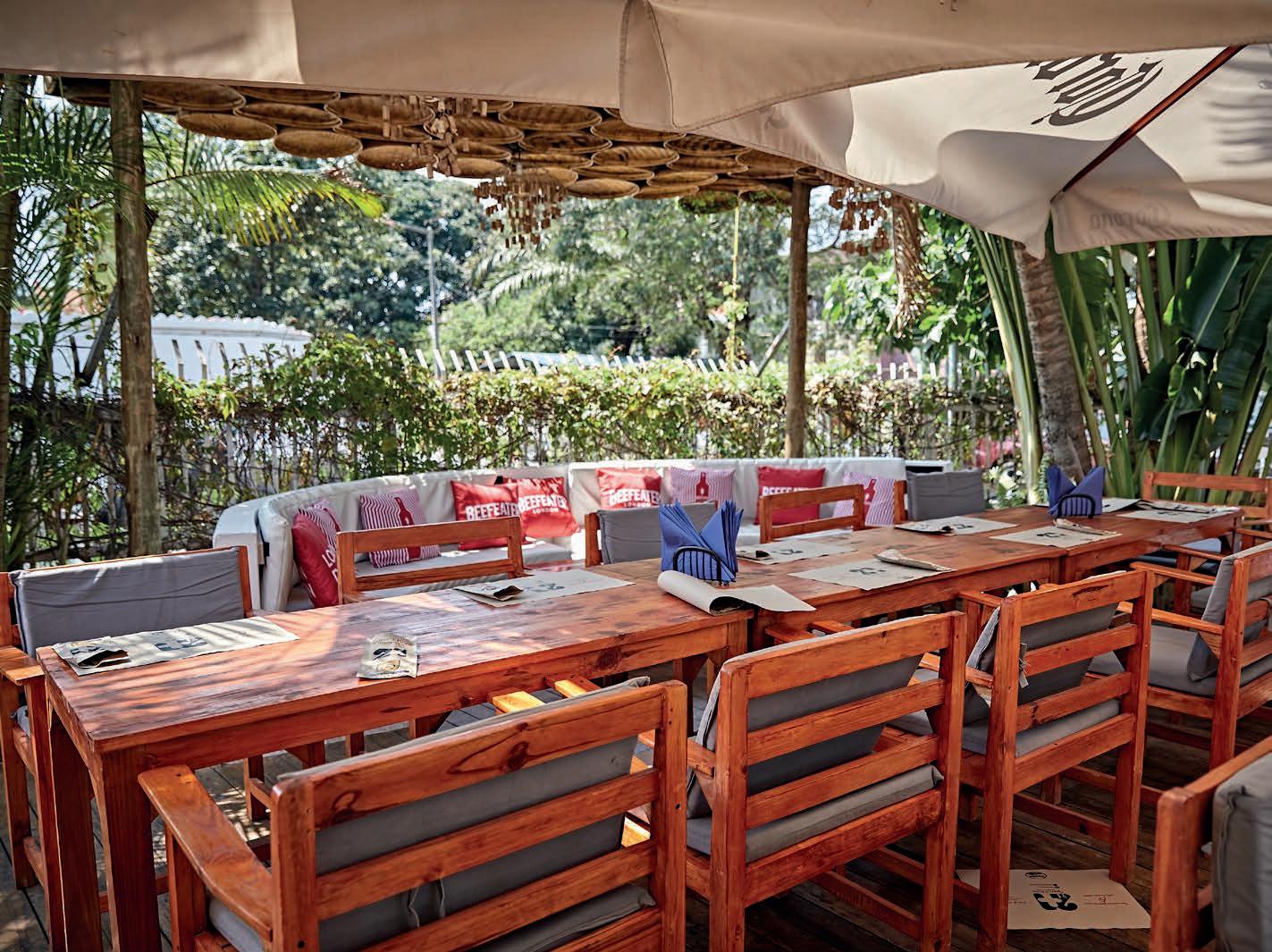 Palates on the loose
Palates on the loose
the country. For our Today´s Special offe rings, there are regularly 2 options: one is always a national dish, and the other from elsewhere in the world. We always try to use regional produce, and we intend to con tinue to do so, as we have good suppliers who provide us with fresh and quality items. We are constantly revisiting and innovating our menus so that the customer doesn’t get tired [of the same dishes] and is rather plea santly surprised. Although we don´t provi de services other than the restaurant at the moment, it is our intention, in the near futu re, to provide catering services to state and private institutions or to whomever wants them.
We believe that for a restaurant to be suc cessful, certain aspects must be kept in mind. Knowing how to cook and serve good food is a very important requirement. However, it is necessary to combine that with a service geared to our customers´ comfort, to be in a strategic location, to keep the staff engaged and motivated, to
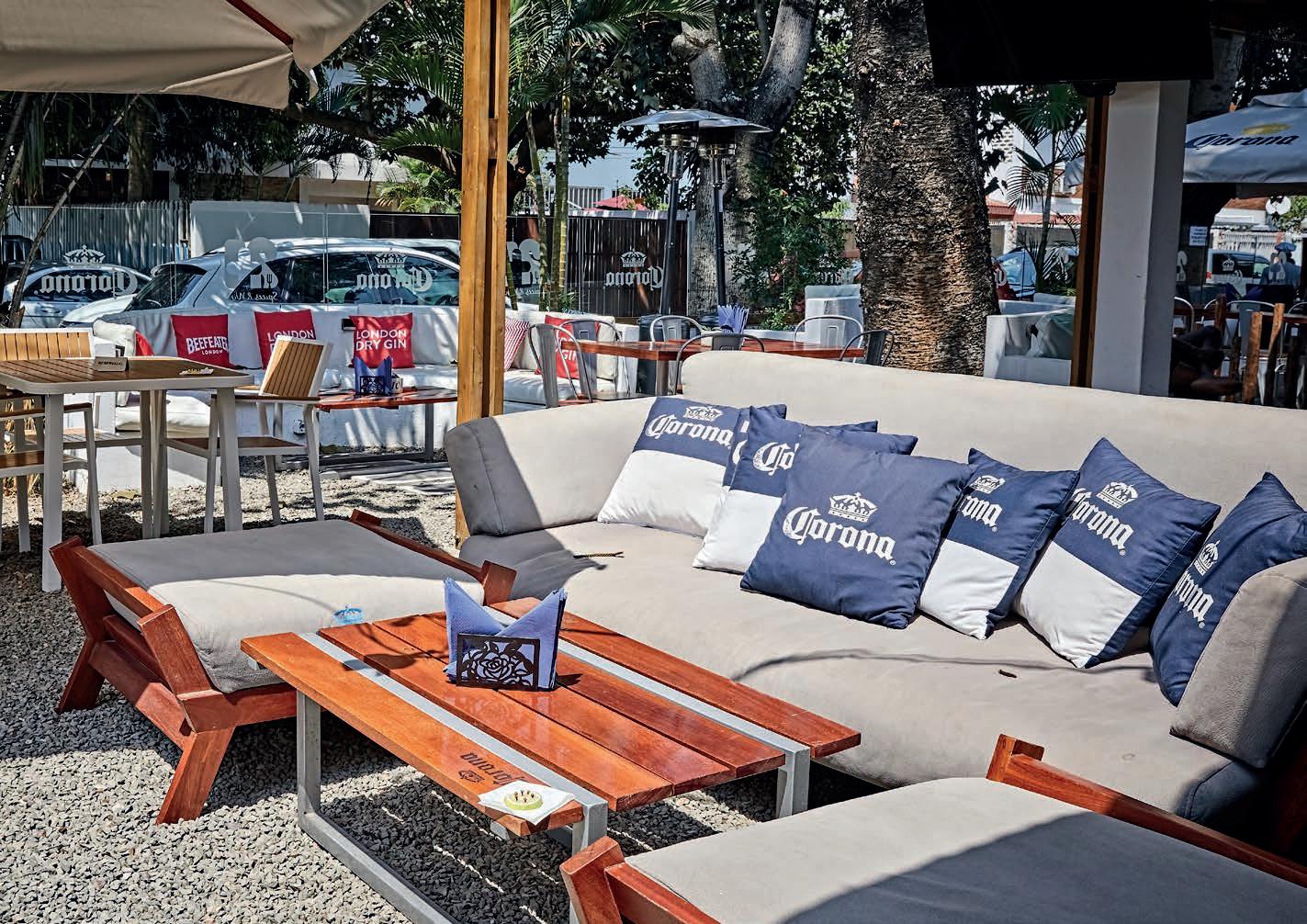
observe the adequate local sanitary stan dards and to devise strategies to deal with the competition. Food is not the most im portant thing, but it is crucial. It is necessary to take into account the service provided, security, location and also the price point.

We are attentive to digital immersion, we follow it, we are aware of this need for glo bal evolution. We open accounts on social networks, platforms where we disseminate our services on a daily basis, and we answer customer requests in a computerized way. We have not yet reached the desired target. At the moment, the big challenge is to ser ve 120 dishes a day at lunchtime, as well as introducing breakfast [in the menu].
As far as plans for the future are concerned, we will reveal them at the right time, becau se secrecy is the soul of the business. Howe ver, we are improving day after day, always keeping in mind that there are no limits for those who want to go far, and that all con certed effort is always rewarded.

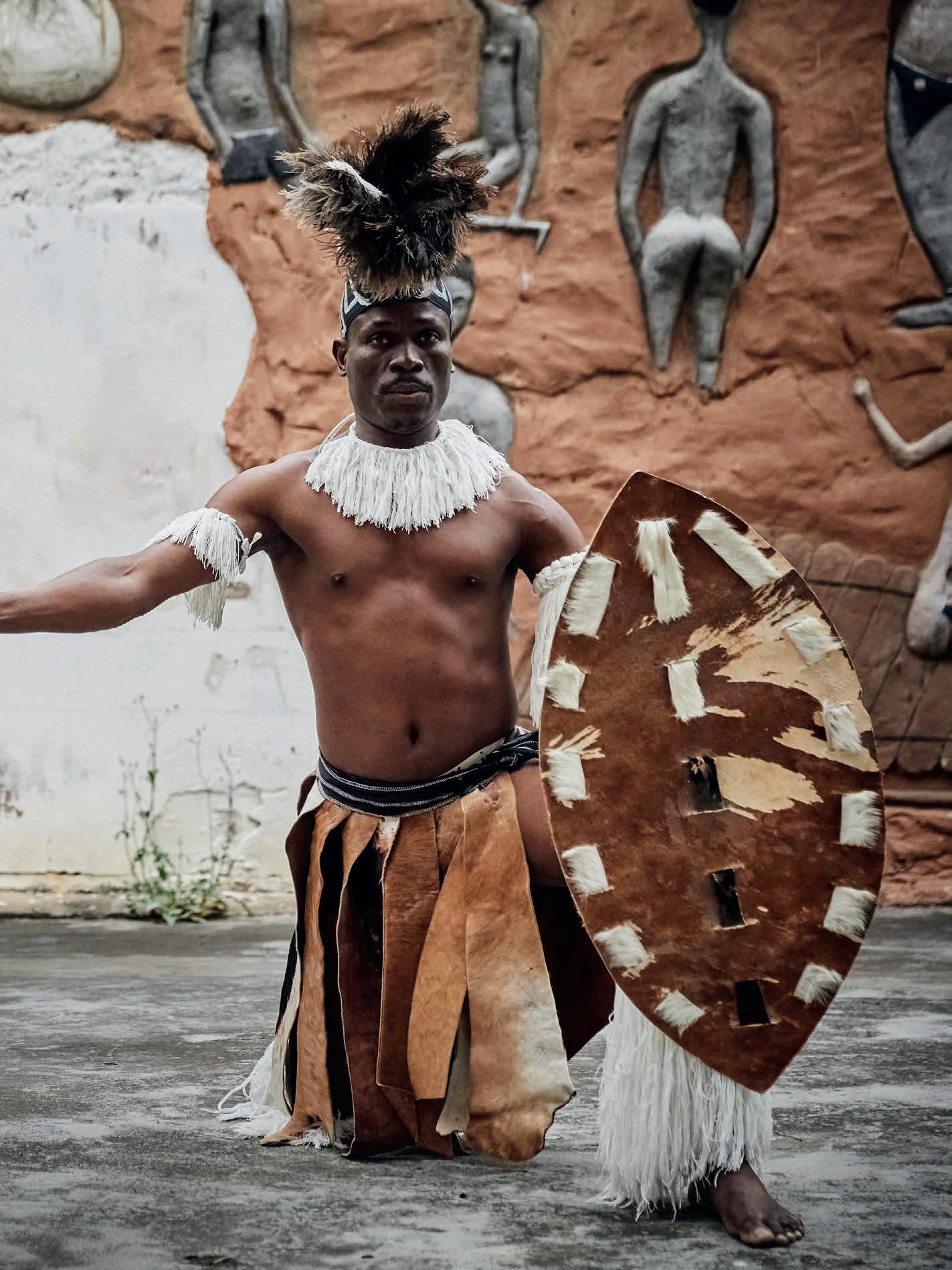

Passos munidos de liber dade ao ritmo conta giante do tambor anun ciam, em meio a cânticos de combate, uma dança carre gada de significados para o povo moçambicano. O Xigubo é uma das maiores formas de expres são cultural do país, uma dança tradicional moçambicana que representa a resistência colonial sobretudo na região sul. Maiorita riamente praticada no interior das províncias de Gaza e Maputo, a dança pode também ser encon trada em outros países vizinhos, como a África do Sul e eSwatini (Suazilândia até 2018).
“O Xigubo é uma dança guer reira. Era uma forma de resistên cia contra a ocupação colonial. Os nossos antepassados não ti nham as armas convencionais que temos hoje. Usavam lanças e escudos para se defender, por isso durante a execução da dan ça é possível notarem-se alguns desses elementos”, afirmou Alex Coana, bailarino e professor da Companhia Nacional de Canto e Dança (CNCD). Acredita-se que o nome da dança esteja associado a um dos principais instrumen tos usados para a sua execução, o tambor. Com efeito, o princi pal tambor desta prática cultural chama-se xigubo, nome que, de acordo com algumas fontes orais e escritas, está vinculado ao som intenso e abrangente (de longo alcance) que é capaz de produ zir ao ser executado individual ou colectivamente, som esse repre
sentado pela expressão onoma topaica gubu-gubu-gubu.
O Xigubo é o falar da dança para a liberdade, o poder da cultura em favor da paz. Durante a sua vida, o poeta José Craveirinha mos trou a sua admiração por esta dança guerreira. Exemplo claro é a sua primeira obra publicada, intitulada “Xigubo”. O poeta de finiu a dança como sendo “uma prática cultural e tradicional que simboliza a resistência colonial do país, sobretudo na região sul de Moçambique”, tendo servido “de preparação ou chamamen to para a guerra de defesa ou de ataque”.
O Xigubo era dançado para fes tejar as vitórias militares e tam bém como forma de preparar os guerreiros, física e militarmente, daí que fosse, na altura, exclusi vamente praticada por homens. Consiste no alinhamento em uma ou duas filas de um determi nado número de homens (dan çarinos), devidamente adornados com objectos de fibras, sementes e peles, ao pescoço, nos braços e nas pernas. Trazem saiotes con feccionados com pele de ani mais, fazendo-se acompanhar de um instrumento de defesa deno minado xitlhango ou azagaia. “Os dançarinos do Xigubo vestem-se como os nossos antepassados. No grupo de dançarinos existe um líder que dá comando, a últi ma palavra, o grito de avanço. Há
um momento na coreografia em que dois dançarinos ficam frente a frente. Através de uma coreo grafia própria, os dois se enfren tam e simulam, através da dança, uma luta”, explicou Alex Coana, professor.
Em relação aos instrumentos usados para a produção do som, para além do referido xigubo, dois outros tambores ajudam a dar vida a esta dança guerreira: o Ngoma e Ngulula, cada um pro duzindo um som específico. En quanto os tambores são tocados, são entoados cânticos exaltando a força e a coragem dos dan çarinos. “Quando os dançarinos executam a dança não sorriem. É uma dança que não se faz com alegria, porque se trata de com bate e preparação para a guerra. Os soldados não sorriem”, acres ceu o professor.
Actualmente esta dança tem sido executada em diversas ocasiões da vida dos moçambicanos e não se restringe aos homens. Novos passos são introduzidos, unindo o moderno ao tradicional, o que torna a dança ainda mais bela. “Passados anos, o Xigubo conti nua a ter o seu lugar reservado na cultura moçambicana. Os acrés cimos que são feitos ajudam a dar-lhe cada vez mais vida. Como professor e amante da dança, fico bastante feliz porque sinto esta necessidade de se manter vivo o Xigubo, que muito represen ta para a cultura moçambicana”, concluiu Alex Coana.
Escrito por: Yana de Almeida
 Fotografia: Mariano Silva
Fotografia: Mariano Silva
Dance steps armed with freedom and moving to the con tagious rhythm of the drum amidst combat chants, announce a dance full of meanings for the Mozam bican people. Xigubo is one of the greatest forms of cultur al expression in the country, a traditional Mozambican dance that represents resistance to colonialism, especially in the southern region. Predominant ly practiced within the prov inces of Gaza and Maputo, the dance can also be found in other neighbouring countries, such as South Africa and eS watini (formerly Swaziland, until 2018).
“Xigubo is a warrior dance. It was a form of resistance against colonial occupation. Our ancestors did not have the conventional weapons we have today. They used spears and shields to defend themselves, so during the dance perfor mance one can notice some of these elements”, said Alex Co ana, dancer and teacher at the Companhia Nacional de Can to e Dança (CNCD - National Company of Song and Dance). It is believed that the name of the dance is related to one of the main instruments used for its execution, the drum. In deed, the main drum in this cultural practice is called xigu bo, a name that, according to some oral and written sourc es, is linked to the intense and reaching (long-range) sound
that it is capable of producing when performed individual ly or collectively, a sound that can be represented by the onomatopoeic expression gu bu-gubu-gubu.
Xigubo is dance´s way of speaking freedom, the power of culture in favour of peace. During his life, the poet José Craveirinha showed his admi ration for this warrior dance. A clear example is his first pub lished work, entitled “Xigubo”. The poet defined this dance as “a cultural and traditional prac tice that symbolizes the coun try´s resistance to colonialism, especially in the southern re gion of Mozambique”, having served “as a drill or call to war, to defend or attack”.
Xigubo was performed to cele brate military victories and also as a way to train warriors, phys ically and militarily – hence, at the time, it was exclusively practiced by men. It consists of grouping a certain num ber of men (dancers) in one or two rows, duly adorned with objects made of fibres, seeds and skins, placed around the neck, arms and legs. They wear skirts made from animal skins, accompanied by a defence instrument called xitlhango or azagaia. “Xigubo dancers dress like our ancestors. With in the group of dancers, there is a leader who gives the com mand, the last word, the cry of
advance. There is a moment in the choreography where two dancers are facing each other.
Through their own choreogra phy, the two face each other and simulate, through dance, a fight”, explained Alex Coana, dance teacher.
Regarding the instruments used to make the sound, in ad dition to the aforementioned xigubo, two other drums help bring this warrior dance to life: the Ngoma and the Ngu lula, each producing a specif ic sound. While the drums are played, chants are sung ex tolling the strength and cour age of the dancers. “When the dancers perform, they don't smile. It´s a dance without any display of joy, because it´s about combat and preparation for war. Soldiers don't smile,” added the professor.
In present day, this dance has been performed on several occasions in the lives of Mo zambicans and is not restricted to men. New steps are intro duced, joining the modern to the traditional, which makes the dance even more beautiful.
“Years later, Xigubo continues to have a place in Mozambican culture. The additions that are made [to it] help give it more and more life. As a teacher and dance lover, I am very happy [with this] because I feel this need to keep Xigubo alive, which represents a lot for Mo zambican culture”, concluded Alex Coana.

 NÂUSICA AINADINE OMAR TAIA, LUANDA, ANGOLA
NÂUSICA AINADINE OMAR TAIA, LUANDA, ANGOLA

de negócios é cada vez mais dinâmico e é muito fácil
irrelevantes.”
sénior de
Escrito por: Eliana Silva
Há quem diga que os amores nascidos durante os tempos áureos de escola são para sempre. Não sabemos se este dito urbano é mito ou verdade, mas acreditamos piamente que o sentimento que levou Nâusica Omar Taia a rumar até Luanda foi decisivo para a construção da profissional e, acima de tudo, da pessoa em que se tornou. Atravessámos o continente para o descobrir.
Uma década fora do nosso país é muito tempo. No caso de Nâusica Omar Taia, emigrar para a capital angolana foi a concretização de muitas ideias que tinha sobre o país do semba. Só para melhor. “Eu já estava familiarizada com o país antes de me mudar [para Luan da]. Vinha há alguns anos para visitas regulares a nível pessoal, e, depois de juntar-me a uma em presa de telecomunicações an golana, sendo uma empresa se diada em Angola, vinha também para visitas profissionais. Embora não tivesse nenhuma ideia pré -concebida que não estivesse de alguma forma alinhada com a realidade, houve muito que aprendi sobre Angola estando aqui”, conta-nos Nâusica.
Formada pela Universidade de Roehampton, em Londres, e ac tualmente a fazer o EMBA (Exe cutive Master of Business Admi nistration) pela Quantic School of Business and Technology, a nossa gestora iniciou os seus estudos na África do Sul, onde conheceu o marido. Hoje, pas sados 10 anos de casamento (e 22 ao lado do marido) e de vida em Luanda, Nâusica assume que “contribuir para o crescimento de uma marca que já é gigante fora de Angola, trazer a mesma
grandeza para o contexto an golano, é um grande desafio”. O seu objectivo é fazer com que a marca para a qual trabalha granjeie o mesmo respeito que tem noutras geografias de África. “Em Angola, e sendo nós um dos bancos mais recentes no país, é de facto um grande desafio, mas um desafio que, com toda a cer teza, estamos a vencer”, afirma Nâusica, como Gestora Sénior de Negócios para o Standard Bank em Angola.

“Sinto que no meu tempo fora de Moçambique amadureci bas tante a nível profissional porque tive a oportunidade de trabalhar em vários sectores (telecomu nicações, FMCG, financeiro), e também a experiência adqui rida num mercado totalmente diferente me dá uma perspec tiva que permite trazer algo di ferente. Moçambique é um país muito inovador, e até bastante avançado em vários aspectos, o que cria um terreno fértil para implementar novas ideias”, parti lha a gestora.
As visitas regulares a Moçambi que têm despertado em Nâusica várias ideias sempre que aterra em Maputo: “Tenho muitos pro jectos em papel que gostaria de fazer em Moçambique, alguns mais, outros menos complexos.
A ideia de criar um espaço de intercâmbio comercial e cultural entre os dois países sempre me agradou, e hoje é cada vez mais possível, porque as plataformas digitais tornaram isto mais fácil”.
Curiosa, Nâusica não nos diz ex plicitamente que a sua vontade constante de aprender é que a levou até ao sítio onde está nos dias de hoje, mas percebemo -lo nas entrelinhas. “O mundo de negócios é cada vez mais dinâmico e é muito fácil tornar mo-nos irrelevantes; a expe riência é um grande aliado do crescimento profissional, mas pode igualmente ser um grande obstáculo, então temos de man ter um equilíbrio entre a busca contínua de aprendizagem e o respaldo que temos na nossa experiência. Estou constante mente à procura de formas de desenvolvimento, não só a nível académico, mas também a ní vel pessoal e social porque cada vez mais se precisa de uma li derança mais humana, e isto também se alcança através da interacção social e crescimen to espiritual de cada um. Em suma, o equilíbrio destes qua tro aspectos dá-nos um grande avanço a nível de crescimento e desenvolvimento pessoal.” Do nosso lado, só podemos rema tar que Luanda está já ali.
 Fotografia: Cortesia de Nâusica Taia
Fotografia: Cortesia de Nâusica Taia

Moçambique é um país muito inovador, e até bastante avançado em vários aspectos, o que cria um terreno fértil para implementar novas ideias

Some say that love born during the golden school years lasts forever. We don't know if this urban saying is truth or legend, but we strongly believe that the feeling that led Nâusica Omar Taia to head to Lu anda was decisive for the construction of the professional and, above all, the person she became. We crossed the continent to find out.
Adecade outside of one´s own country is a long time. In the case of Nâusica Omar Taia, emigrating to the Angolan cap ital was the realization of many ideas she had about the coun try of semba (a traditional mu sical and dance style). Only for the better. “I was already familiar with the country before moving [to Luanda]. I had been coming regularly for a few years for per sonal reasons and, after joining an Angolan telecommunica tions company based in Angola, I also came for professional rea sons. Although I didn't have any preconceived ideas that weren't somehow aligned with reality, there was a lot I learnt about Angola by being here”, tells us Nâusica.
Graduated from the University of Roehampton in London, and currently enrolled in the EMBA (Executive Master of Business Administration) from the Quan tic School of Business and Tech nology, our manager began her studies in South Africa, where she met her now husband. To day, after 10 years of marriage (and 22 together) and living in Luanda, Nâusica recognizes that “contributing to the growth of a brand that is already a giant out
side of Angola, and bringing the same greatness to the Angolan context, is a great challenge". Her aim is to ensure that the brand she works for earns the same re spect it has in other African ge ographies. “In Angola, and since we are one of the newer banks in the country, it is indeed a great challenge, but a challenge that we are certainly overcoming”, says Nâusica, as Senior Business Manager for Standard Bank in Angola.
“I feel that, in my time outside Mozambique, I matured a lot at the professional level because I had the opportunity to work in different sectors (telecommu nications, FMCG, finance). The fact that I acquired expertise in a totally different market gives me a perspective that allows me to bring something different. Mo zambique is a very innovative country, even quite advanced in several aspects, which creates fertile ground to implement new ideas”, shares the manager.
Regular visits to Mozambique have sparked several ideas in Nâusica whenever she lands in Maputo: “I have many projects on paper that I would like to do in Mozambique, some more complex than others. The idea

of creating a space for com mercial and cultural exchange between the two countries has always attracted me, and to day this is increasingly possible, because digital platforms have made it easier.”
Curious, Nâusica does not ex plicitly tell us that her constant desire to learn is what led her to where she is today, but we can read this in between the lines. “The business world is in creasingly dynamic, and it´s very easy to become irrelevant. Ex perience is a great ally of pro fessional growth, but it can also be a great obstacle, so we have to maintain a balance between the continuous search for learn ing and the support provided by actual work experience. I am constantly looking for ways to develop, not only at an aca demic level, but also at a per sonal and social level because, increasingly, a more humane leadership is required, and this is also achieved through social interaction and spiritual growth of each and every one of us. In short, the balance of these four aspects gives us a head-start in terms of personal growth and development.” From our stand point, we can only conclude that Luanda is already there.


Certos artigos podem ser comprados com um simples deslizar de um cartão, mas podem levar milhares de anos para se decomporem
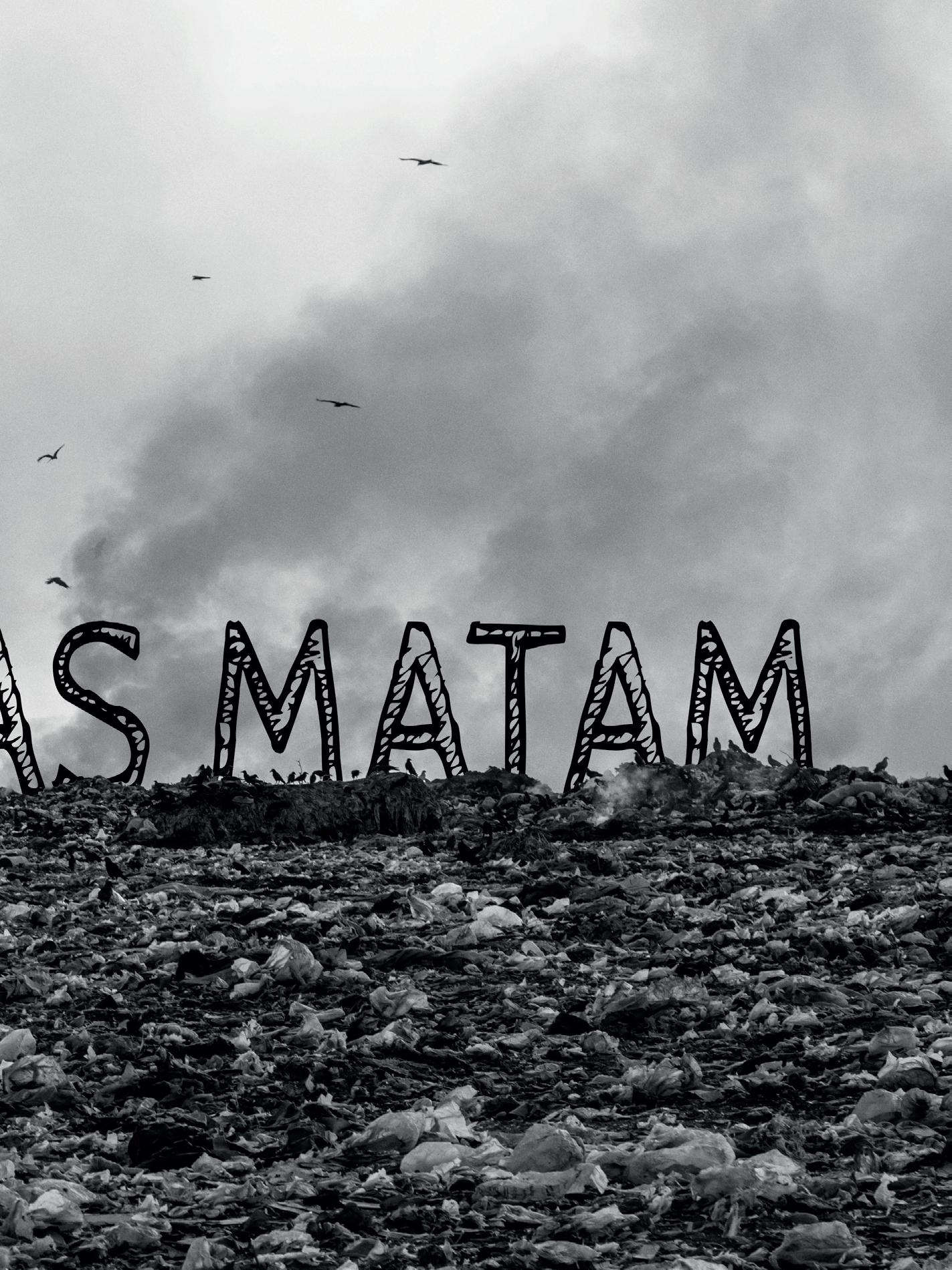
Os humanos que entenderam o conceito de "menos é mais" estão a garantir o seu próprio futuro. Cada um de nós tem essa responsabilidade. Certos artigos podem ser comprados com um simples deslizar de um cartão, mas podem levar milhares de anos até mesmo para se decomporem. Se todos os consumido res adoptassem aquela mentalidade, talvez ela pudesse oferecer ao nosso planeta melhores condições.
Amaioria das famílias descarta todos os seus resíduos em caixotes do lixo para que as casas se mantenham limpas e com higiene. Mas será que isso mantém limpo o nosso ambiente? Só o podemos saber ras treando o caminho dos resíduos que partem das nossas casas. Depende de se vão ser queimados, compostados e reciclados ou simplesmente ficar por aí, em terrenos isolados, bloqueando espaço e danificando o meio ambiente, em suma, criando lixeiras.
As lixeiras são um dos principais contribuintes de mudança climática. Quanto mais se acumula, mais gases com efeito de estufa são libertados. Aves e animais, como corvos e vacas, começam a ali mentar-se desses resíduos, acabando por agravar a possibilidade de consumo de materiais perigosos.
Algumas estão situadas em áreas de favelas, o que é muito inseguro porque as pessoas que vivem nessas áreas se tornam catadoras. Investem a sua
1Reduzir o desperdício de alimentos. O que não for comido pode ser doado ou dado a pessoas carenciadas. Reco menda-se vivamente às famílias que planifiquem as suas refeições.
2Comprar a granel. Comprar coisas a granel significa menos embalagens, portanto, reduz o desperdício.
saúde para nada porque estão a arriscá-la para a sua sobrevivência, enquanto, de facto, o que fa zem está a matá-las lentamente. Sinal disso são as doenças pulmonares que começam a desenvol ver. É preciso que se acabe com essas condições para que não aconteçam casos como o da Lixeira do Hulene.

As lixeiras estão repletas de resíduos como peças de roupa, materiais plásticos, fraldas e guardana pos, comida e muito mais. Esse inadequado des carte de resíduos pode ser minimizado e superado gradualmente, sendo feito correctamente. Vamos todos consumir menos. Redução, reutilização e reciclagem é matéria ensinada a quase todas as crianças, mas a implementação desses procedi mentos ainda pode ser melhorada
O consumo em massa pode ser reduzido, reutili zando-se e reciclando-se de várias formas. Eis al gumas que envolvem mudanças no que respeita ao consumo de alimentos:
4Passar a utilizar talheres reutilizáveis –dizer não a uso único.
3
Evitar comprar alimentos embrulhados em plástico, especialmente de uso úni co. A maioria dos supermercados tem alimentos embrulhados em plástico, pelo que seria benéfico mudar-se para opções locais.
Comprar produtos reciclados.
Fazer compostagem de resíduos ali mentares.
Estas não são certamente as únicas maneiras de se pôr fim ao consumo em massa. São apenas alguns exemplos, mas há muito mais há que cada família poderá adoptar. Só agindo em conjunto podemos trazer mudanças. Nós somos os super-heróis que podem salvar o futuro. Só nós podemos impedir que aconteça a extinção dos humanos. Só nós.
Nós somos os super-heróis que podem salvar o futuro que se aproxima. Só nós podemos impedir que aconteça a extinção dos humanos
 Fotografia: Zoran Borojevic
Fotografia: Zoran Borojevic
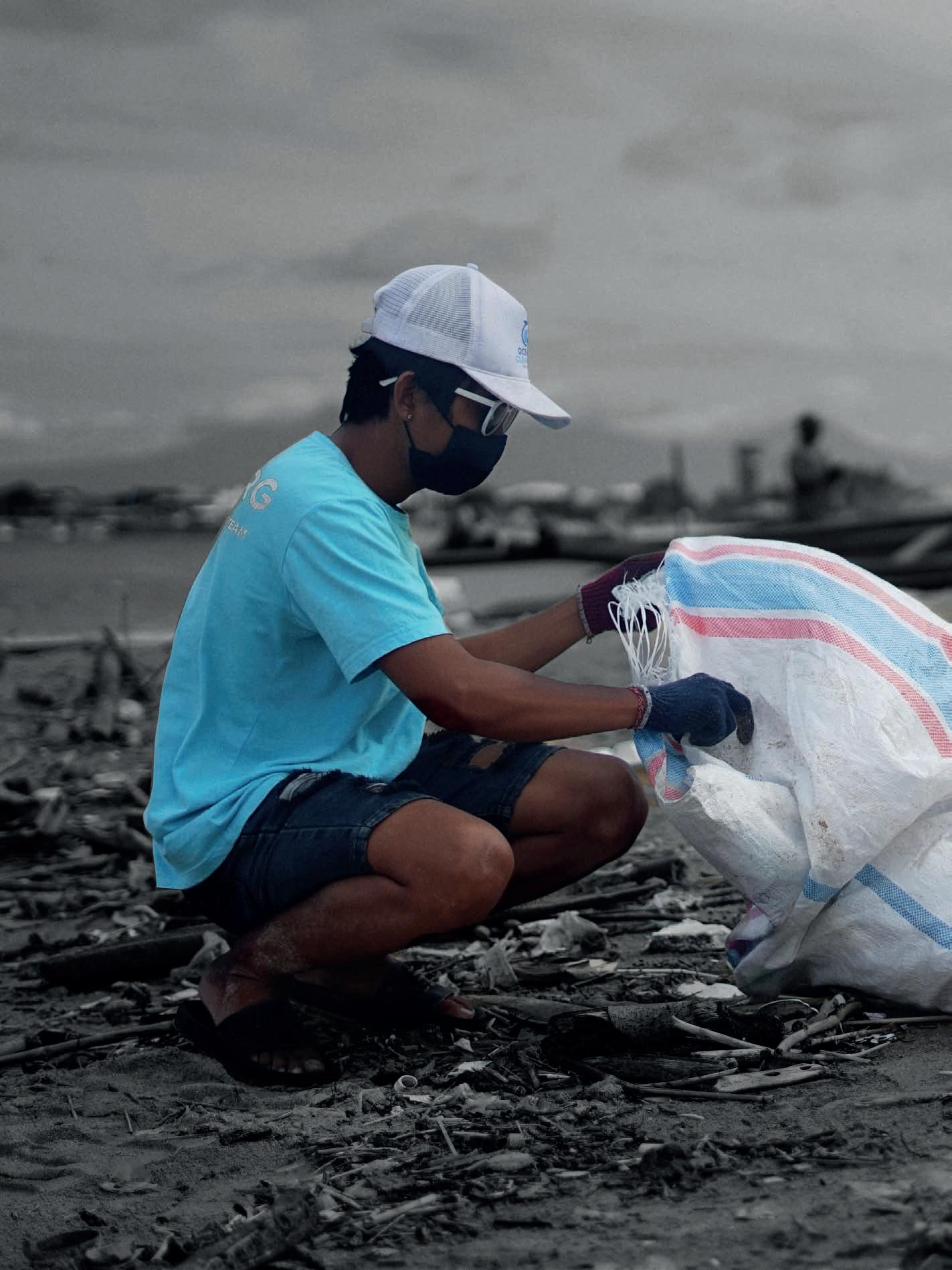

As lixeiras são um dos principais contribuintes de mudança climática. Quanto mais se acumula, mais gases como efeito de estufa são libertados

Humans who have understood the concept of ‘less is more’ are securing their own future. Each one of us is responsible for doing so. Buying certain items may take just one swipe of a card, but then take thousands of years to decompose. If all consumers adopted this mindset, perhaps it could give our planet the gift of better conditions.

Most households dispose of their waste into wastebins, so that ho mes are kept clean and hygiene is maintained. But does this, in turn,
keep our environment clean? That can only be determined by following the path of the waste after it leaves our houses. It depends on whe ther it is going to get burnt, composted, recy cled or just lie out there, on isolated stretches of land, blocking space and damaging the en vironment – in short, creating landfills.
Landfills are one of the main contributors of climate change. As more waste accumulates, more greenhouse gases are released. Birds and animals, such as crows and cows, start feeding on this waste, eventually increasing the chan ces of consumption of dangerous materials.
Landfills are also breathing grounds for disea ses. Some landfills are situated in slum areas, which is very unsafe because people living in
1Reducing food waste. Uneaten food can be donated or fed to the needy. Households are highly recommended to plan their meals.
Buying in bulk. Buying things in bulk means less packaging, thus reducing waste.
Avoid buying food wrapped in plastic, especially single use. Most supermarke ts sell food wrapped in plastic, hence switching to local options would be beneficial.
those areas become waste pickers. This comes at cost, because they are risking their health for survival, when such is, in fact, slowly killing them. One of the signs of this is that they start developing lung diseases. Such conditions need to be stopped, so that cases like the Hu lene Dump Site do not reoccur.
Landfills are filled with waste such as clothing items, plastic materials, diapers and paper napkins, food scraps and much more. This im proper disposal of waste can be minimized and then slowly stopped by doing it the right way.
Let’s all consume less. Almost all children are taught about reducing, reusing and recycling waste, but implementing these actions can still be improved.
Mass consumption can be reduced by reusing and recycling in various ways. Here are some ways of changing how we consume food, for example:
Switching to reusable cutlery – saying no to single use.
Buying recycled products.
Composting food waste.
These are certainly not the only ways to bring an end to mass consumption. They are just a few examples, but there are many more that each household could adopt. Only in acting together can we bring about change. We are the superheroes that can save the future. Only us can prevent human extinction from happening. We are the only ones.



 Fotografia: Cortesia de BaiaMall
Fotografia: Cortesia de BaiaMall
Mostrar as tendências da moda e as novi dades das colecções de diversas lojas e estilistas foi um dos objectivos do Moda Baía 2022, que vinha sendo planeado há 4 anos pelo Baía Mall, em parceria com a DDB Moçambique. Compuseram-no três dias de desfiles inéditos, nos dias 17,18 e 19 do corrente mês de Setembro. E é neste mês que
se pretende que o Moda Baía se realize regularmente, tornando -se um evento anual. Para me lhor levar a cabo este desidera to, o Baía Mall juntou-se à DDB Moçambique, detentora de uma vasta experiência construída ao longo de 18 anos de Mozambi que Fashion Week.



Como forma de contribuir efec tivamente para o desenvolvi
mento da indústria da moda no país, um dos objectivos que se pretende alcançar com a inicia tiva é que o Moda Baía seja um ponto de network de diferentes intervenientes. “Queremos ofere cer o melhor aos nossos clientes, inquilinos e parceiros”, disse Lisié Champier, da organização do evento. Como um centro comer cial é um lugar frequentado por pessoas em busca de resposta às
suas necessidades, o Moda Baía funciona como influenciador. É, portanto, um ponto estratégico, um lugar para que os estilistas nacionais possam expor a sua criatividade.

“Neste momento, contamos com uma média de dez mil pessoas, diariamente, e, é claro, sábado é o dia de maior movimento, em que atingimos aproximadamen
te dezasseis mil pessoas”, disse Lisié, ao ilustrar a capacidade de dar maior visibilidade aos artistas nacionais. “O Baía Mall orgulha -se de poder finalmente dar este passo que está a ser planeado há 4 anos”, disse Lisié Champier, res ponsável pelo evento. “Pretende mos, para além de demonstrar as novas colecções das lojas e ten dências internacionais, agrupar a criatividade, o conhecimento

e o desenvolvimento cultural dos moçambicanos”, frisou. Lisié Champier acredita que a cida de de Maputo e o país precisam de contar a sua história no seu próprio espaço. “Pretendemos apoiar ainda mais criando espa ço para jovens talentos exporem os seus trabalhos artísticos e in centivando a inovação, a recicla gem e a protecção do meio am biente”, concluiu.

Showcasing fashion trends and new arrivals from the collections of various stores and designers was one of the objectives of Moda Baía 2022, which had been planned for the past 4 years by Baía Mall, in partner ship with DDB Moçambique. It consisted of three days of unprecedented fashion shows, which took place on the 17th, 18th and 19th of September. And it is intended that, from now on, Moda Baía will be held regularly every September, becoming an annual event. In order to materialise this, Baía Mall partnered with DDB Moçam bique, which has a vast experience of such events, built up over 18 years at the helm of Mozambique Fashion Week.

As a way of effectively contribute to the development of the fashion industry in the country, one of the targeted objec tives of the initiative is that Moda Baía becomes a networking event for the par ticipants. “We want to offer the best to our customers, tenants and partners”, said Lisié Champier, from the event's organi zation. Since a shopping centre is a place frequented by people looking for an an
swer to their needs, Moda Baía works as an influencer. It is, therefore, a strategic point, a place for national stylists to show case their creativity.
“Right now, we have an average daily foot traffic of ten thousand people, and Sat urday is, of course, the busiest day, when we reach approximately sixteen thousand people”, said Lisié, illustrating the ability to give greater visibility to national art ists. “Baía Mall is proud to finally be able to take this step that has been in planning for 4 years”, said Lisié Champier, respon sible for the event. “In addition to show casing the new collections in stores and international trends, we intend to bring together the creativity, knowledge and cultural development of Mozambicans”, she stressed. Lisié Champier believes that the city of Maputo – and the coun try on the whole – need to tell their story in their own space. “We intend to provide even more support by creating a space for young talents to exhibit their artistic works and encourage innovation, recy cling and environmental protection”, she concluded.

“Baía Mall is proud to finally be able to take this step that has been in planning for 4 years”



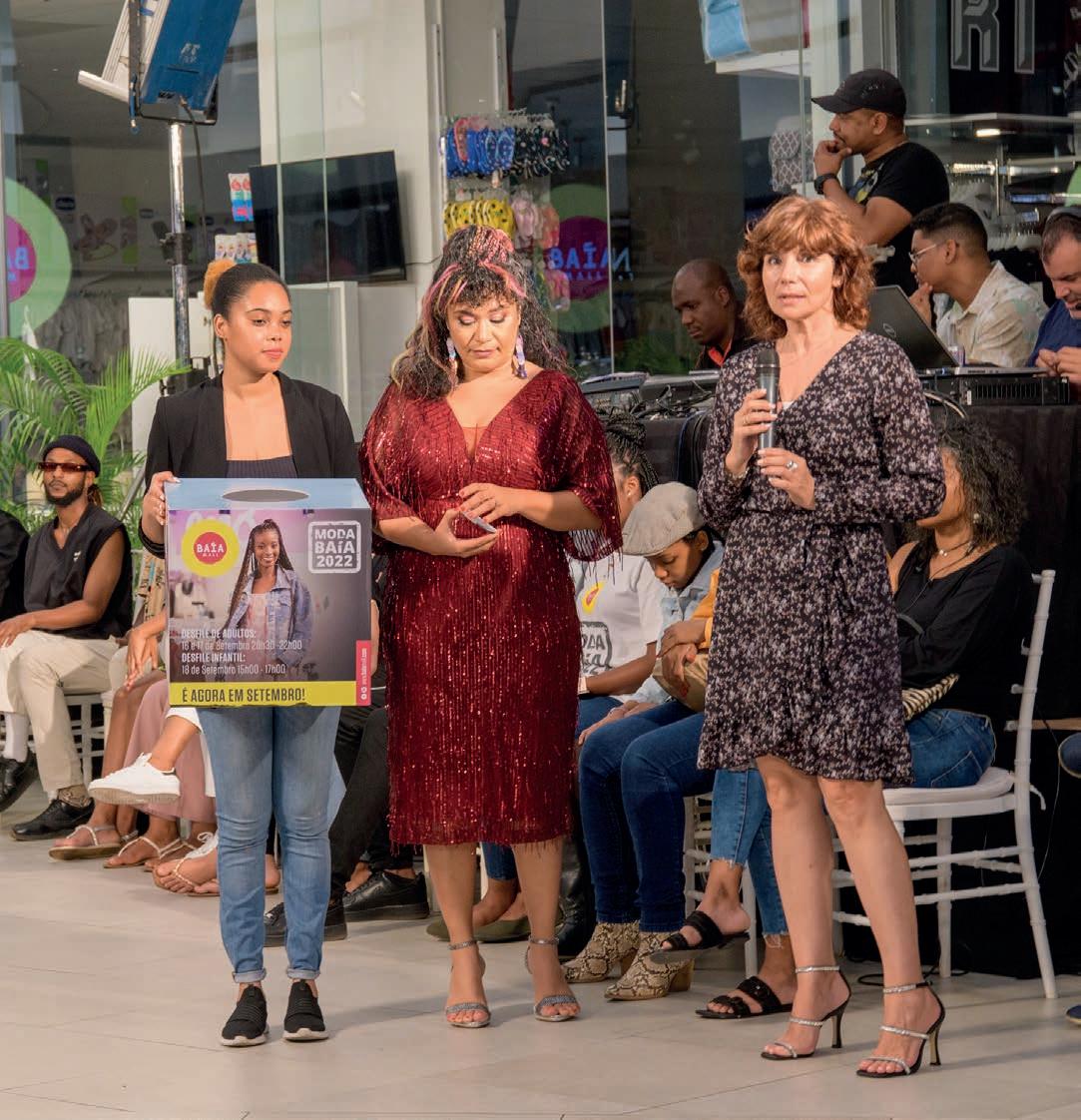

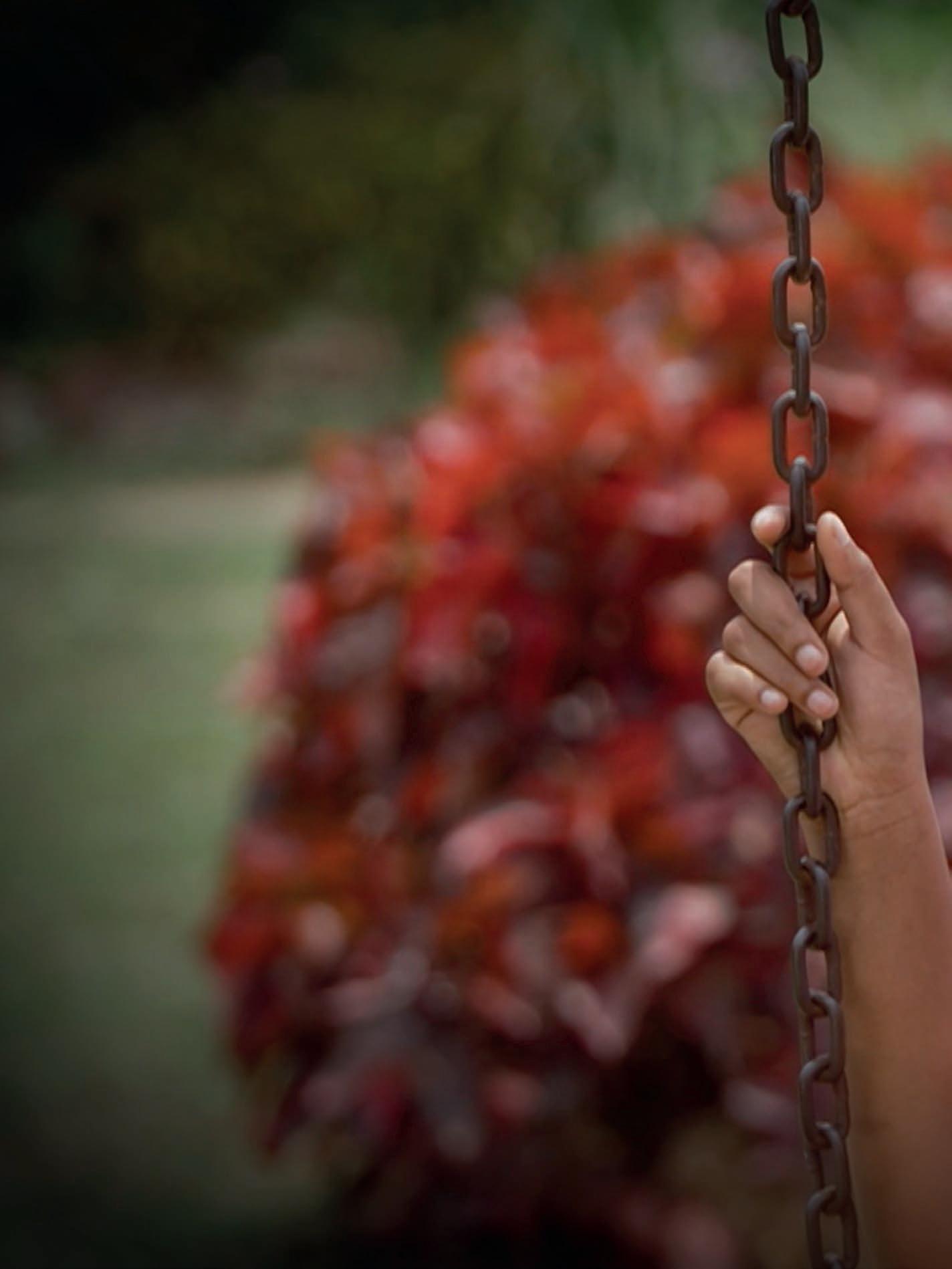
Maida é a primeira telenovela moçambicana, com emissão diária. Encontra-se na segunda temporada, após terem sido apresentados os 130 episódios que constituíram a primeira. É uma produção da Pana video para a M-Net, difundida no canal Maningue Magic, ex clusivamente para Moçambique. Conta uma jornada de amor, emoções e drama entre privilegiados e desfavorecidos.
Uma ingénua e inocente adolescente, do meio rural, deixa para trás a família e os estudos e parte para a grande cidade, para trabalhar como empregada doméstica em casa de uma família rica e complexa. Trata-se de uma história clássica que combina o romance do conto de fadas com a relevante questão social que constitui a educação da rapariga em Moçambique.
O elenco conta com Tânia Tembe, no papel de Maida, Dadivo José, Nilza Sitoi e Dino Mboa, entre outros talentosos actores nacionais. A produção é de Gabriela Gulamussen e Telma da Silva, e a realização esteve a cargo de Ivandro Mahocha. Pelo número de episódios que já possui e pela boa recepção que tem merecido, Maida vem demonstrar a possibilidade de Mo çambique ter nos seus canais produção de ficção nacional com qualidade e de forma regular.

Maningue Magic
Cortesia
It is a classic story that combines a fairy tale romance with the relevant social issue that is the education of girls in Mozambique


Maida is the first Mozambican telenovela to broadcast dai ly. It is now in its second season, after a first season con sisting of 130 episodes. It is a Panavideo production for M-Net, broadcast on the Maningue Magic channel exclu sively in Mozambique. It tells a story of love, strong emotions, and drama between the privileged and the disadvantaged.
A naïve and innocent teenager from the rural countryside leaves her family and studies behind and moves to the big city to work as a

maid in the home of a rich and complex family. It is a classic story that combines a fairy tale romance with the relevant social issue that is the education of girls in Mozambique.
The cast includes Tânia Tembe in the role of Maida, Dadivo José, Nil za Sitoi and Dino Mboa, among other talented national actors. The production is by Gabriela Gulamussen and Telma da Silva, and direc tion by Ivandro Mahocha. Owing to the number of episodes already aired and to being well received, Maida demonstrates the possibility of Mozambique producing quality national fiction to be broadcast on local networks on a regular basis.

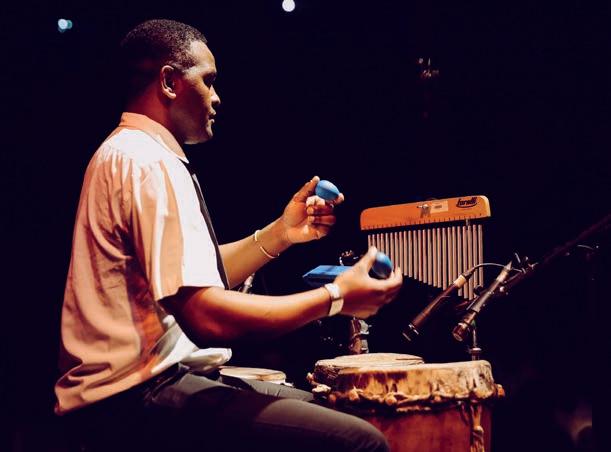




 DELTINO GUERREIRO Apresentação do album Rokotxi - CCFM
Fotografia: Mariano Silva
DELTINO GUERREIRO Apresentação do album Rokotxi - CCFM
Fotografia: Mariano Silva
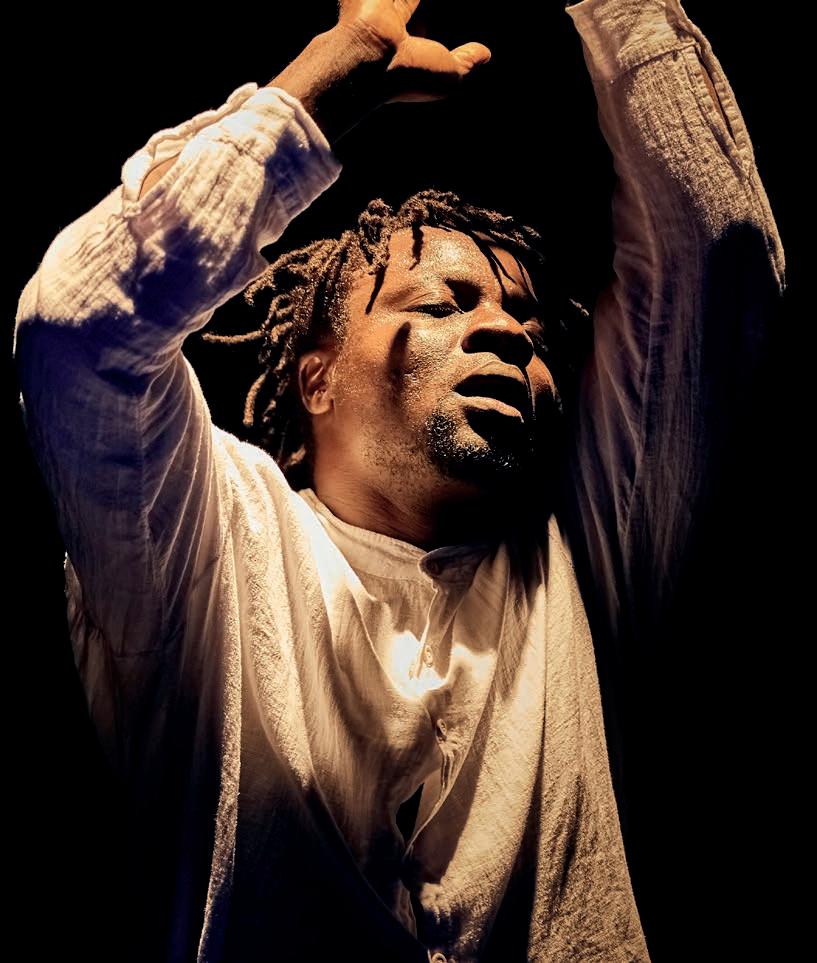

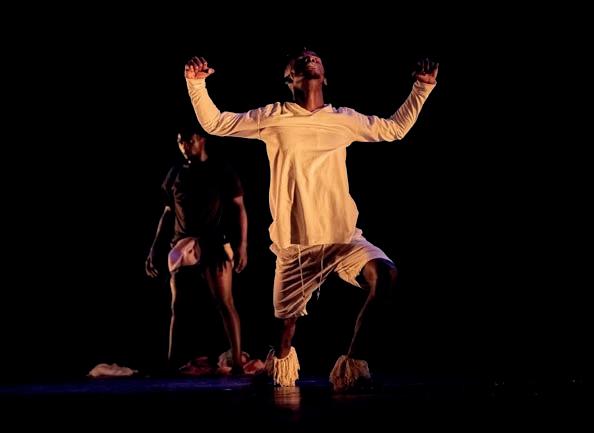
 SEMANA DA DANÇA
SEMANA DA DANÇA
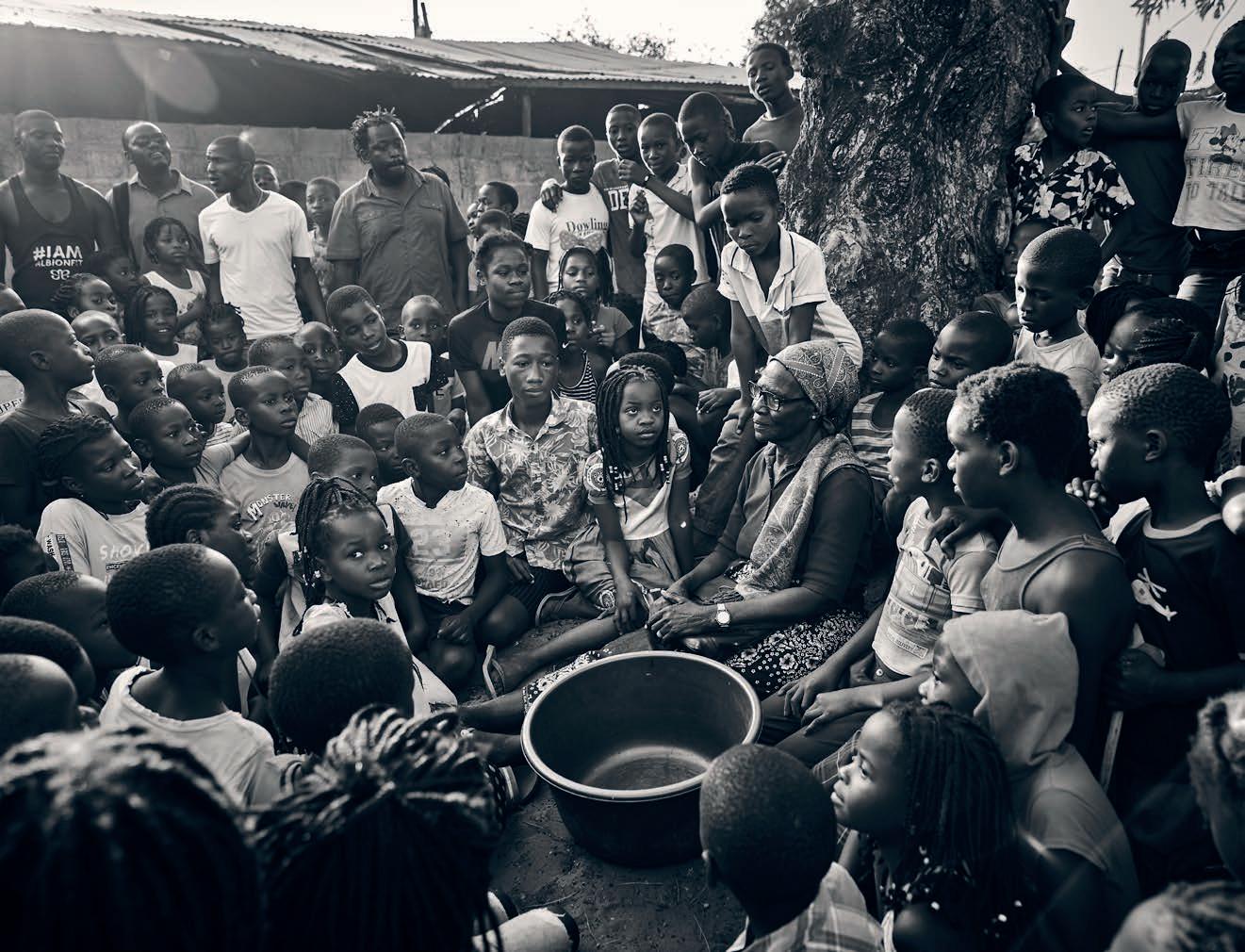
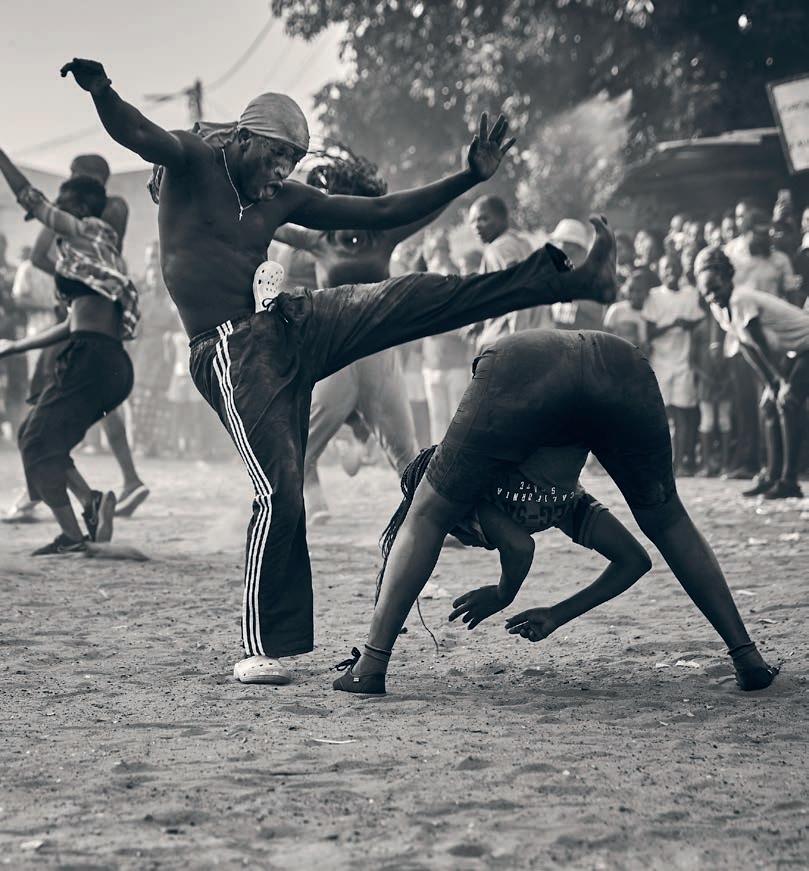
 Fotografia: Mariano Silva
Fotografia: Mariano Silva

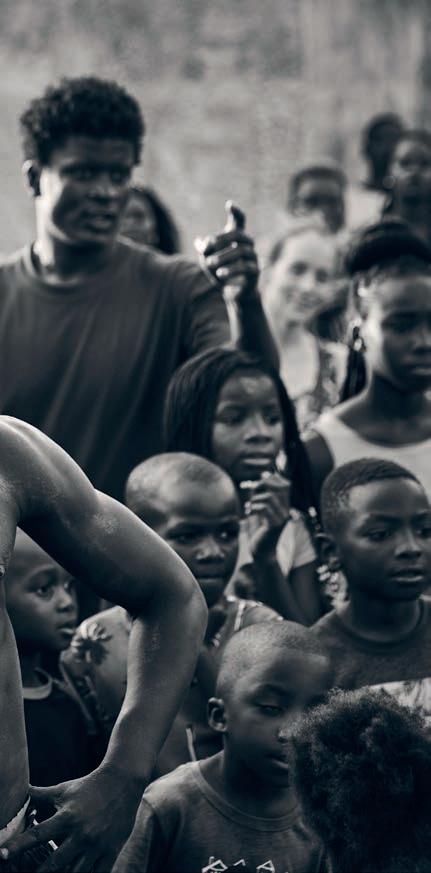
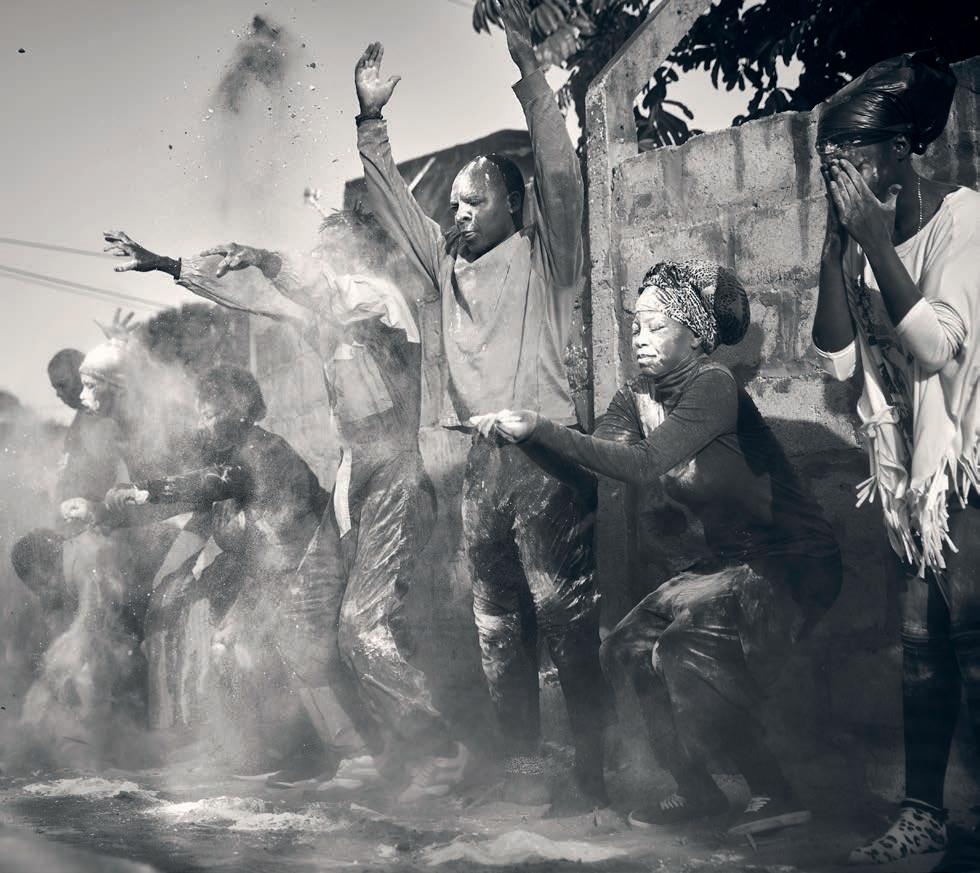 MUGHANGUENI
Festival GALA-GALA
MUGHANGUENI
Festival GALA-GALA
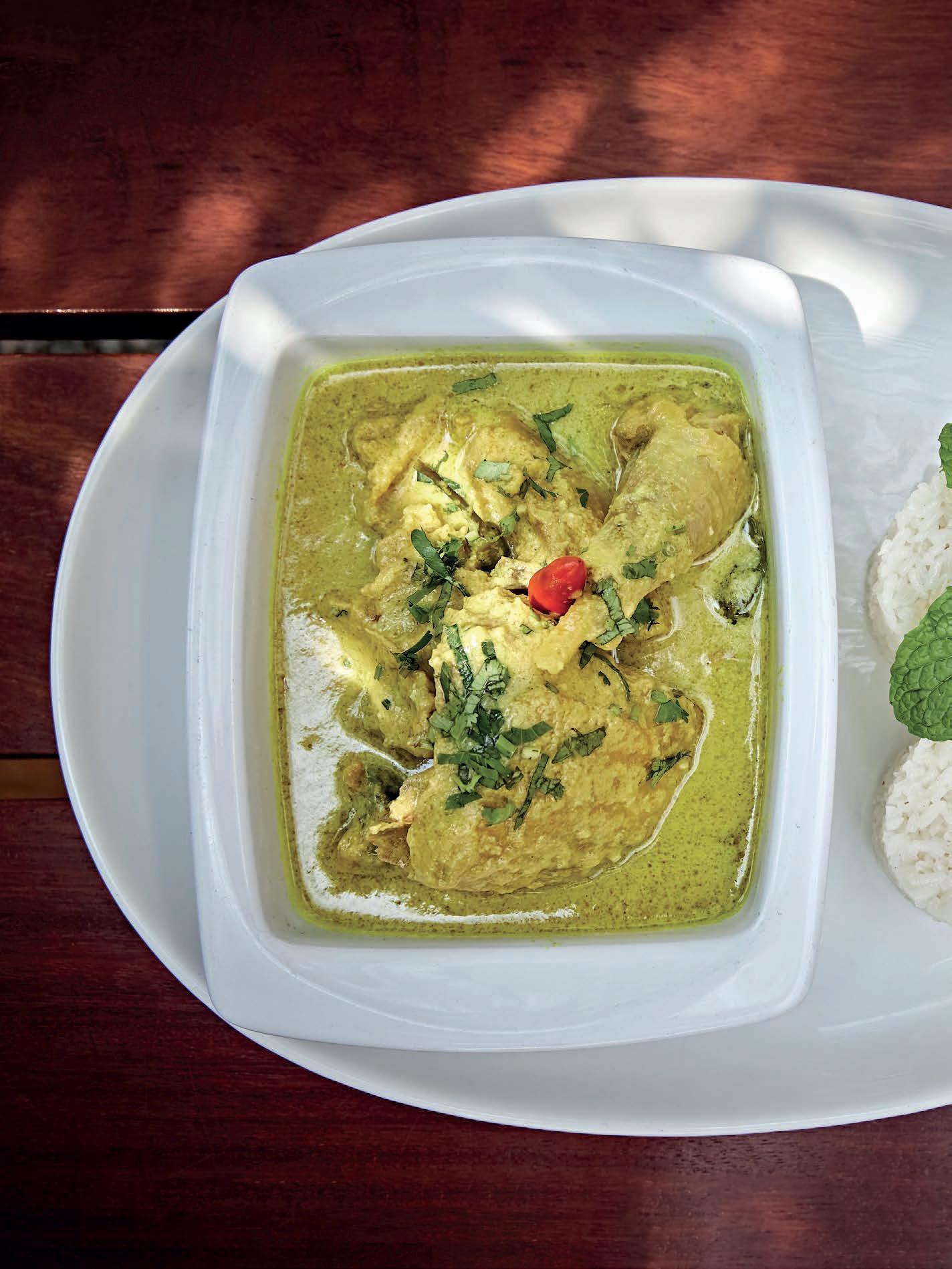 Silva
Silva
de leite de coco fresco
cebolas grandes
de alho esmagados
de louro q.b.
frescos picados
Rajah q.b. Açafrão q.b. Sal q.b. Caldo de galinha q.b. Salsa q.b. Óleo q.b. Água q.b.

Depois de depenar e limpar a galinha, corta-se aos pedaços. Numa panela, deita-se um fio de óleo, coloca-se a cebola, o alho e a(s) folha(s) de louro, e deixa-se refogar até que a cebola com ece a aloirar. Em seguida, adicionam-se o tomate, o açafrão, o caril Rajah e continua-se a mexer até se formar uma pasta. Com a panela ainda ao lume, coloca-se a carne da galinha cortada, adicionando água e sal. Deixa-se ferver até que a galinha coza e vai-se deitando o leite de coco. Deixa-se ferver um pouco mais, até que apure, e põe-se caldo a gosto. Serve-se com arroz branco.

• 1 Chicken
• ½ Litre of fresh Coconut Milk
• 2 Large Onions, finely chopped
• 10 Garlic cloves, crushed
• Bay leaves, to taste
• 3 Fresh Tomatoes, finely chopped
• Rajah curry powder, to taste
• Saffron powder, to taste
• Salt, to taste
• Chicken stock, to taste
• Parsley, to taste
• Oil, to suit
• Water, to suit
After plucking and cleaning the chicken, cut it into cubes. In a pan, pour a bit of oil, add the onion, garlic and bay leaf(s), and sauté it until the onion starts to brown. Then add the tomato, saffron powder, Rajah curry powder and con tinue to stir until a paste forms. With the pan still on the stove, add the cubed chicken meat, topping with water and salt. Let it boil until the chicken is cooked and then add the coconut milk. Let it boil a little longer until it thickens, and add the chicken stock to taste. Serve with white rice.
Real estate brokerage. Planning and budgeting. Management of relationships with the investor. Property assessments. Management of real estate projects. Administrative management and support for due diligence.

Tel:

Email: geral@euopto.pt



